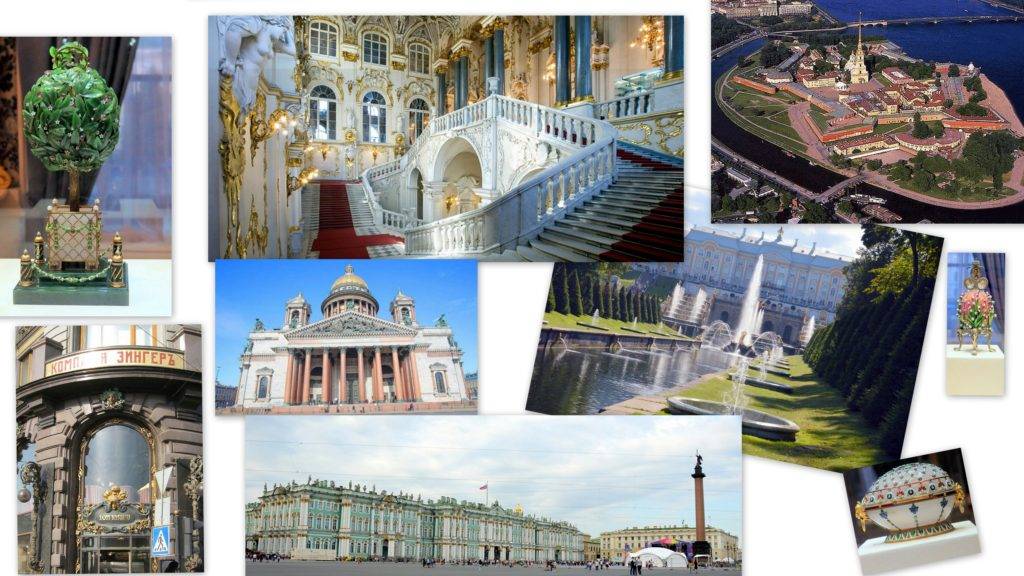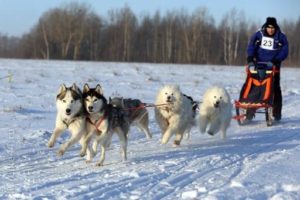Travels are my endless inspiration for spreading new perspectives, new stories and deepest words and learning new landscapes, people, customs, different cultures, evoking events, so in the most beautiful way, so I will take you through the lens of my camera to travel on the golden Russia, more precisely St. Petersburg.
At the end of August this year, I stayed in St. Petersburg for a few days. Founded in 1701 by Peter the Great, the creator of the powerful state of the Russiannation, this beautiful imperial city is today a six-million metropolis at the mouth of the Neva to the Gulf of the Baltic Sea, and is certainly one of the most beautiful cities in the world I have been to.
By: Zoran M. Kos Translation: Ana Šebalj / Photo by Zoran M. Kos and Anna Balandina
My Samoyeds and cynology are my “wings” that give great impetus to my travels. They gave me a lot, they give me a powerful trip, I met many people, places, customs, left various drinks, made many friends and manny unknown breeds of dogs. I saw and judge big number of dogs. It was a great opportunity to use the city that owes a debt to St. Peter (Simon Petre) at the site, which was commissioned by the Russian Emperor Peter the Great. He is the founder of St. Petersburg, and others have they just decorated and beautified.

The Neva River flows through most of the city.
In the middle of the Neva River, the Peter and Paul Fortress and the Trinity Bridge, on the right side is the Winter Castle.
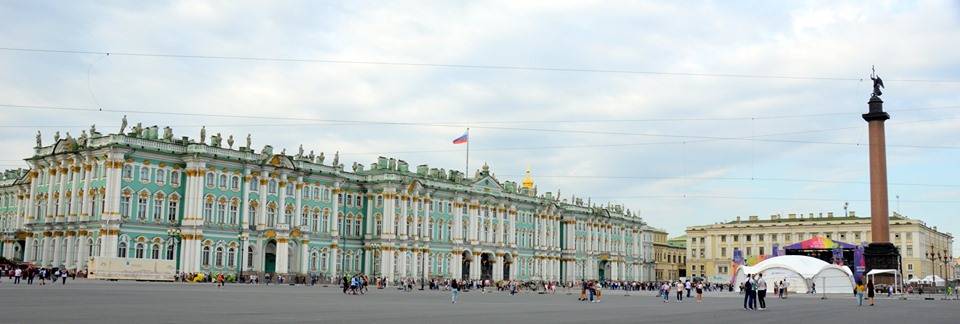
On the way from Zagreb Airport to Pulkovo Airport in St.Petersburg, I slowly scroll through the notes about St.Petersburg. Those wich count and summary about him, had noted: The settlement, which has changed three names in three centuries – Petrograd, Leningrad and St. Petersburg, or simply Peter, as its inhabitants have called it as nick name, is a symbol of Russian history.
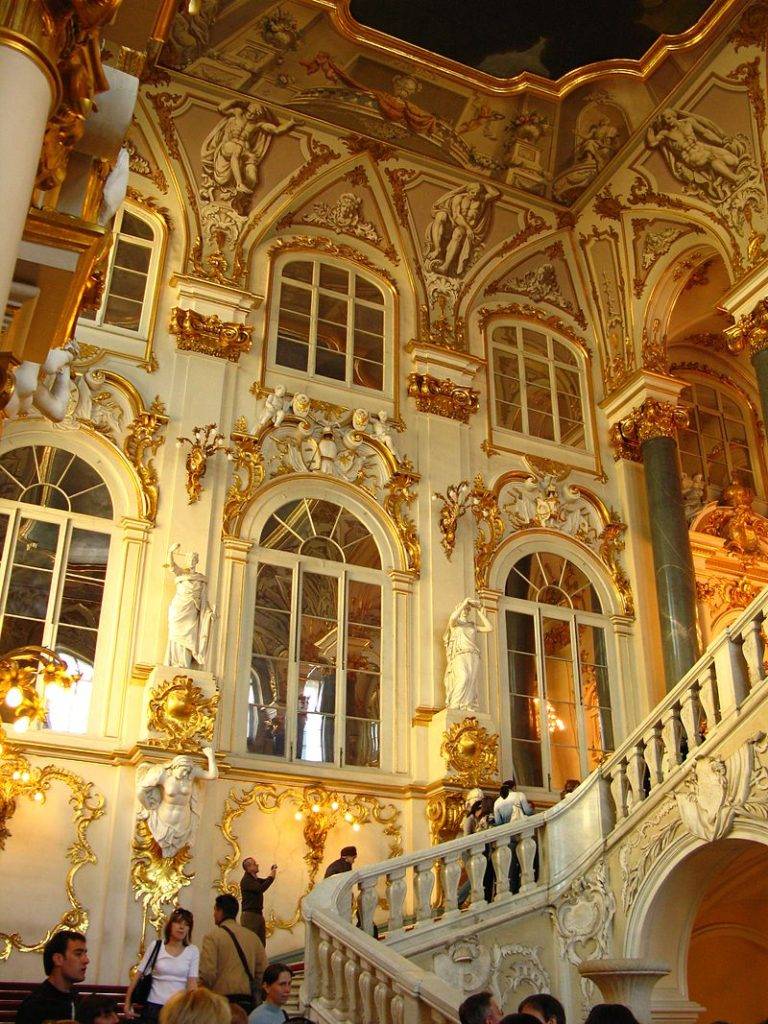
There are nearly 600 bridges in it, 22 of which are movable. There is working more than 70 theaters and more than 20 international art festivals, including the International Cultural Forum, and nearly 80 music festivals take place each year in St. Petersburg. Over 300 bars, pubs and nightclubs. St. Petersburg is the gastronomic capital of Russia. More than 250 museums, more and more … and soin infinity.
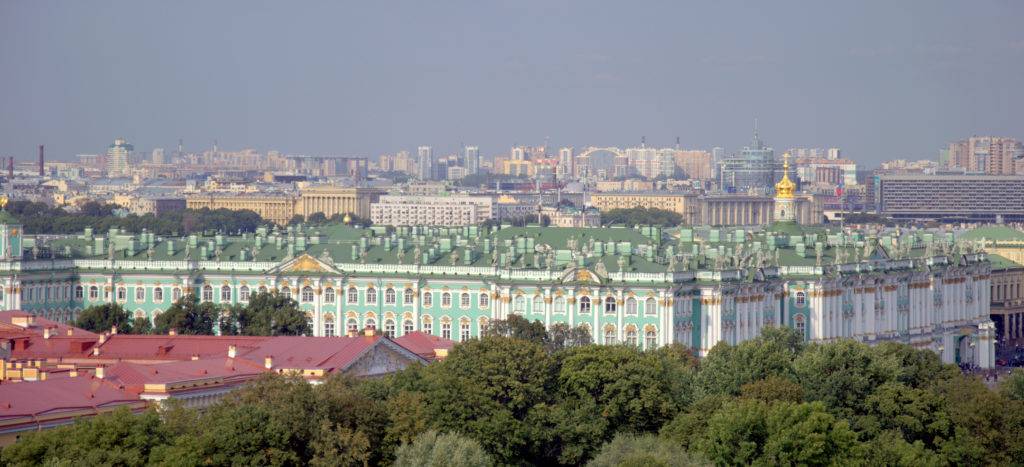
Moscow Prospect (Boulevard) to Moscow Gate
My hosts are waiting for me at the airport and we drive to the city center by the Moscow Prospect (boulevard) to the Moscow Gate. We stop here to see the triumphal gate and visit the monument to Count Miloradović in the immediate vicinity.
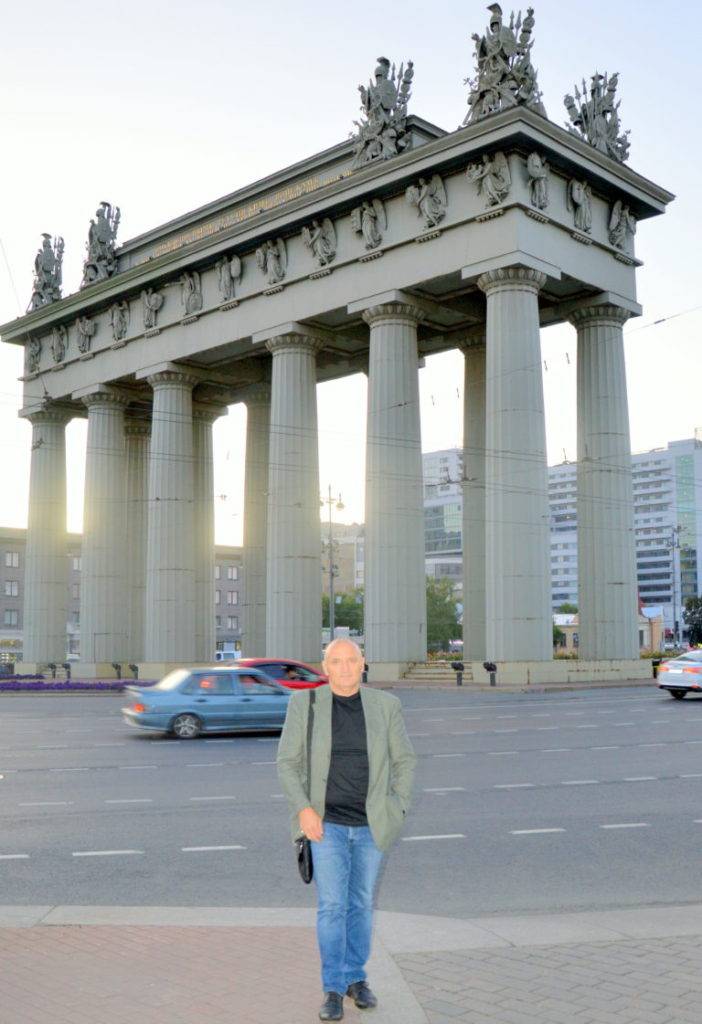
“Oktobarska”
I am located in the Oktobarska Hotel, located on half of Nevsky Prospect, the main street in the city. The hallway from the elevator to my room is almost longer than my street. We quickly unpack and start exploring the city first. It is very close to the main street of Nevsky Prospect and already there we are caught by the huge crowd on the street.
House of book- Home of „Singer“ company
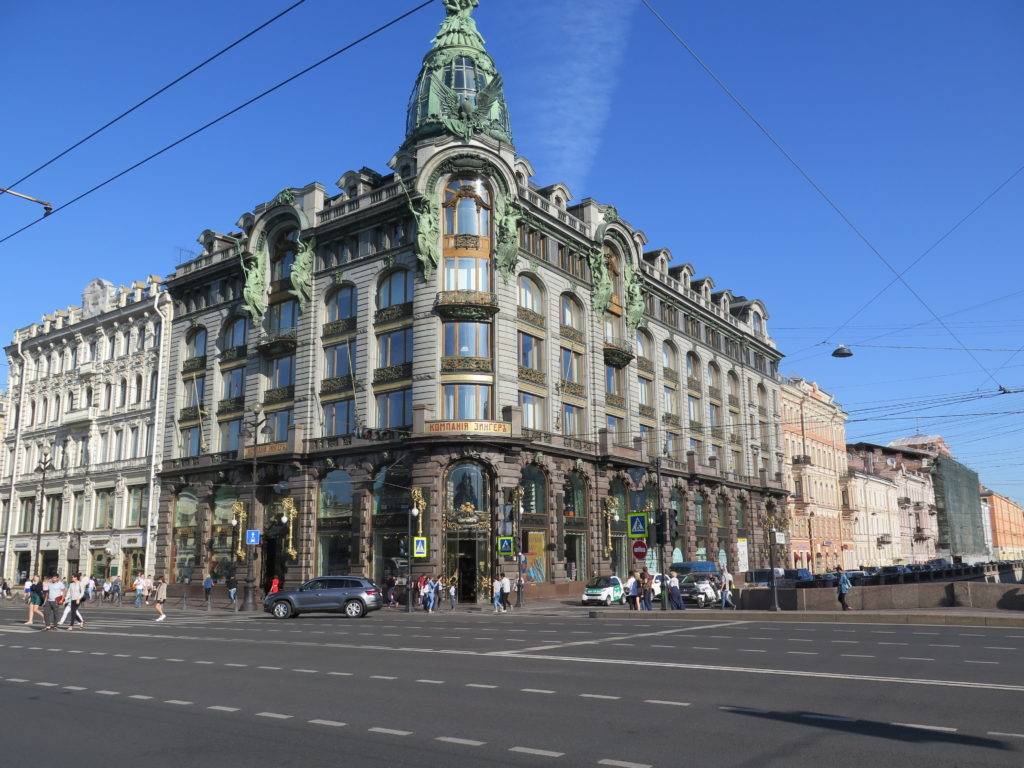
The former palace of the sewing machine manufacturer Singer, has been replaced by the Home of the Book.
After placement and unpacking, I start exploring the city. The first destination is the “Home of the Book”, the Book House-The home of the “Singer” Company. Beautiful Art Nouveau building, full as pomegranate of books and souvenirs, because there are about 200,000 book titles and about 70,000 souvenirs. I buy two books, crowds at the cash register, like at our sales in big shopping centers. I have coffee upstairs. and I enjoy the view of the Kazan Cathedral, guarded by Field Marshals Kutuzov and Michael Barclay de Tolly, whose monumental monuments stand in front.
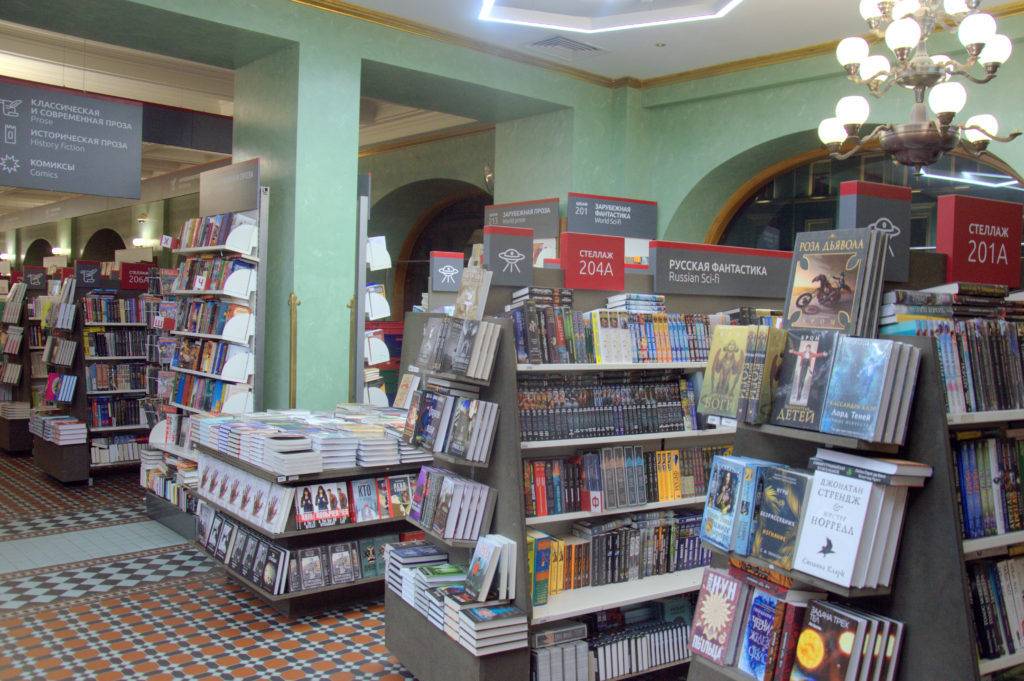
Nevsky Prospect – a symbol of St. Petersburg
Today it is the main street of St. Petersburg, a boulevard decorated by some of the city’s most beautiful palaces. The Nevsky prospectus, or just Nevsky as it is called in the jargon by its inhabitants, is a symbol of a metropolis with about six to seven million souls.
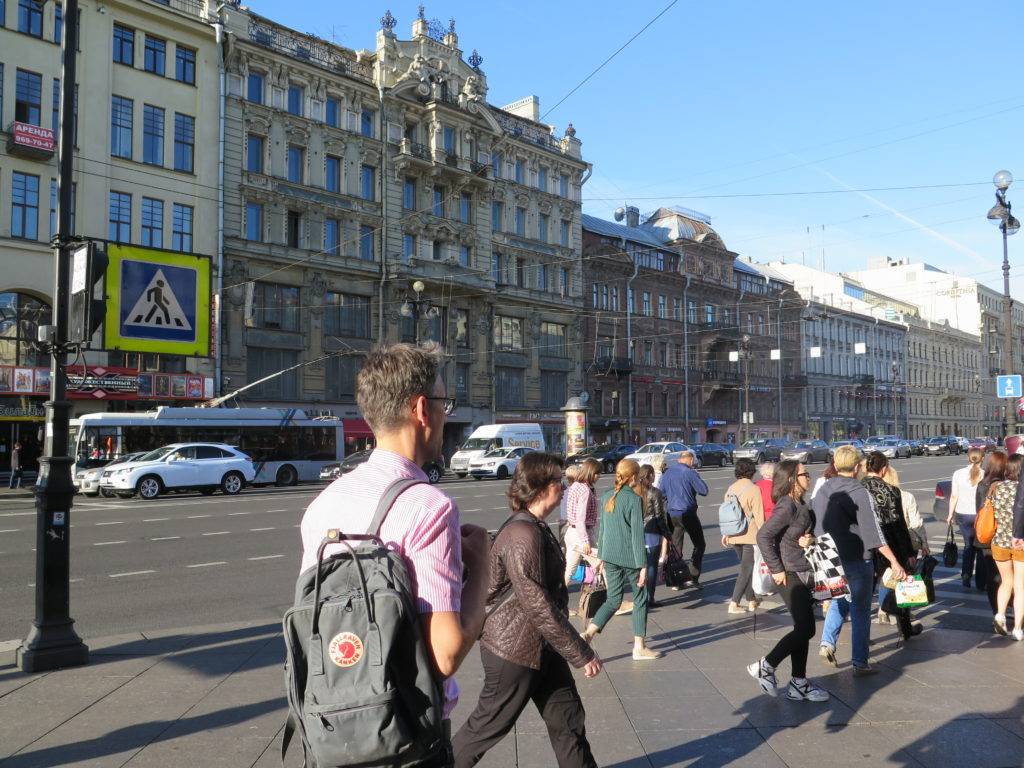
The city, which has changed three names in three centuries -Petrograd, Leningrad and St. Petersburg, is a symbol of history, and the Nevsky Prospect is a symbol of St. Petersburg, a metropolis with about seven million inhabitants.
It begins and ends on the same bank of the Neva, in whose great port nested the oldest part of St. Petersburg. It starts from the magnificent and historically significant Admiralty Palace on the Neva River and leads to the Monastery of St. Alexander Nevsky (13th century military commander), also on the bank of the same river. Walking down the avenue is like a journey through the history of the Russian Empire. Petrograd was its capital and Nevsky Boulevard was main vein. This second part is that special today. There are countless cars and buses, wide sidewalks full of people, there are extremely many tourists wandering between the magnificent monuments of the time of the mighty imperial Russian empire. The biggest and most important events in St.Petersburg are happening on the Nevsky Prospect. The best hotels are also located here, the epicenter of good nightlife. Most of Nevsky Boulevard’s buildings are from the 19th century, so the Neo-Renaissance style is dominant. Nevsky Boulevard is about 6 km long and has “only” 200 house numbers. So, this is size of this buildings and boulevards …
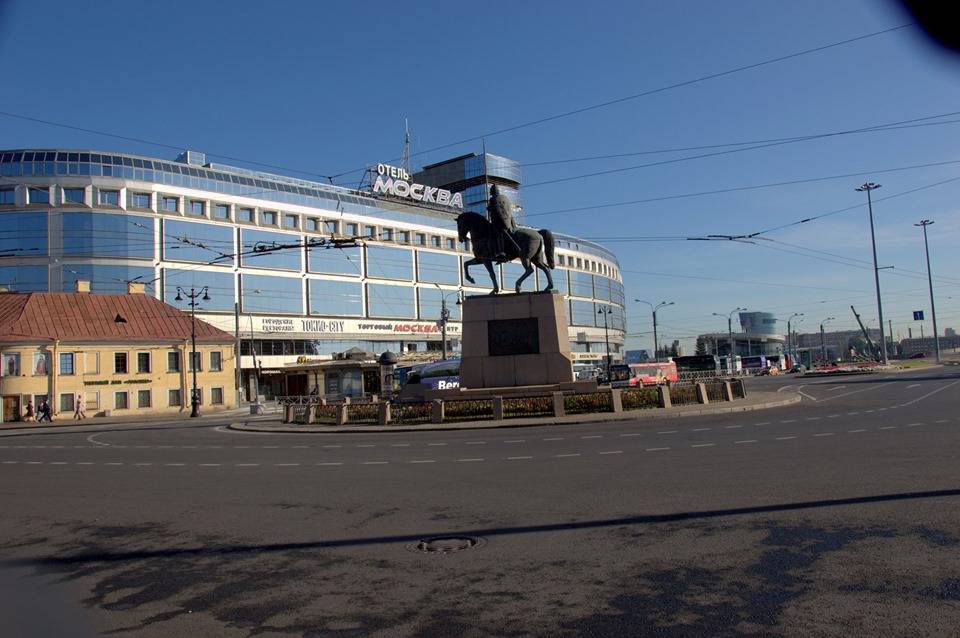
Walking along the main St. Petersburg street, which is almost 6 kilometers long, is a challenge,for both, for the feet of walkers and tourists, as well as the incredible architectural beauty that you can see on both sides of this wide boulevard. It has only three buildings erected in the 20th century.
The Moscow Hotel on Alexander Nevsky Square ends Nevsky Boulevard.
Anjicko’s Bridge
Anichkov Bridge, also known as the Horse Bridge. On its four pillars were placed statues depicting the relationship between man and horse, from the first encounter to domestication. Peter the Great himself is immortalized in the English stallion.
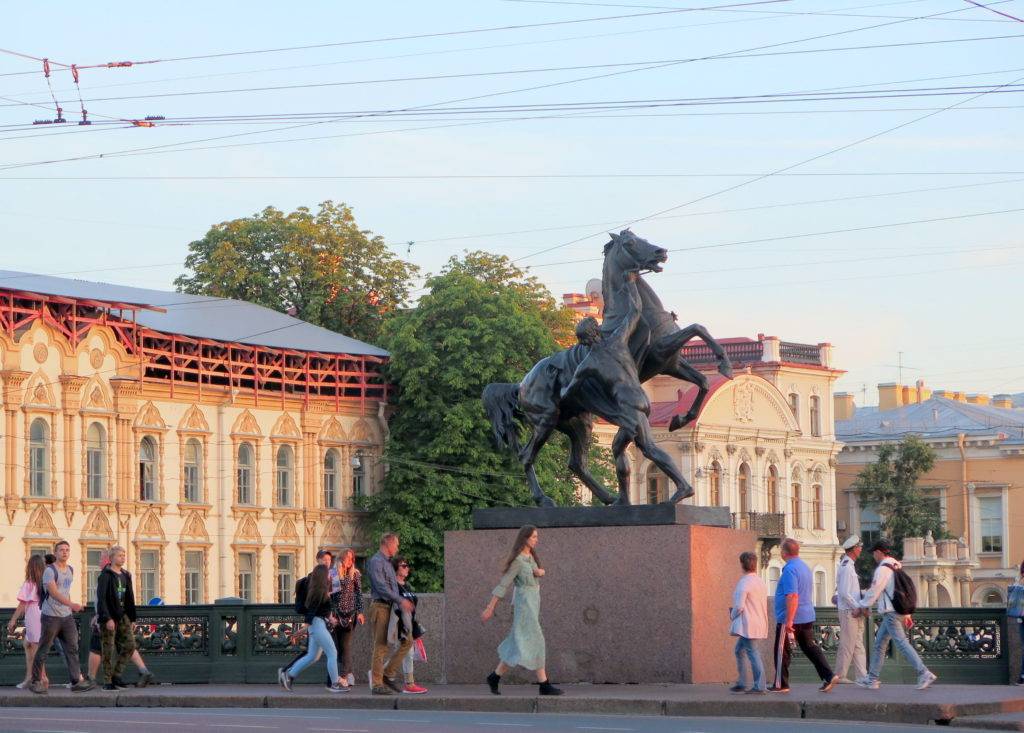
The beautiful and imposing Anjicko Bridge, which is adorned with the sculptures of Horse Tailoring. It was named after Major Anjicko, whose soldiers erected a boulder bridge across the Fontanka towards Nevsky Prospect.
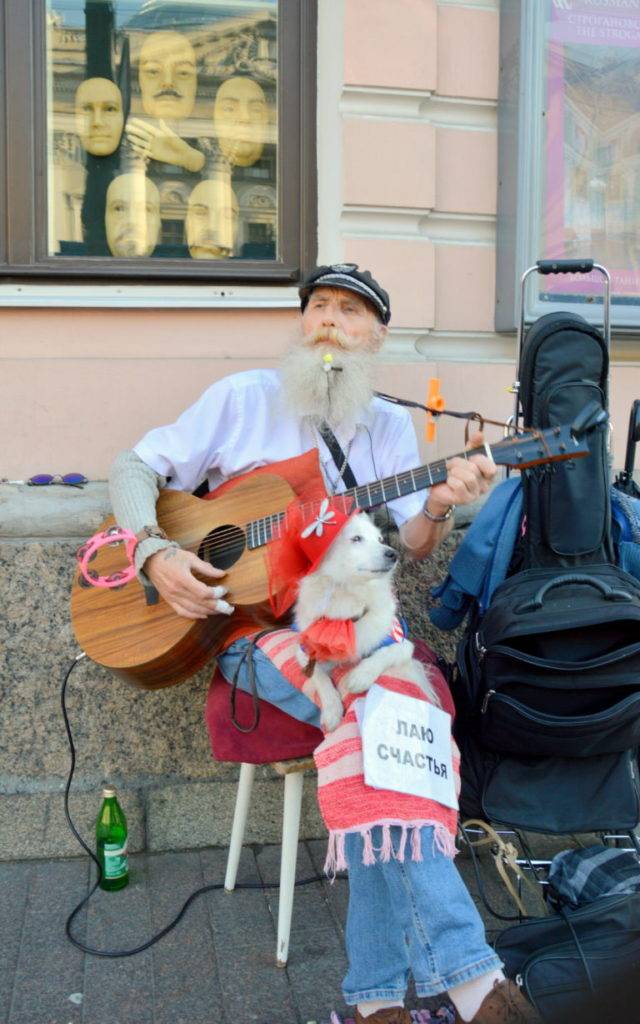
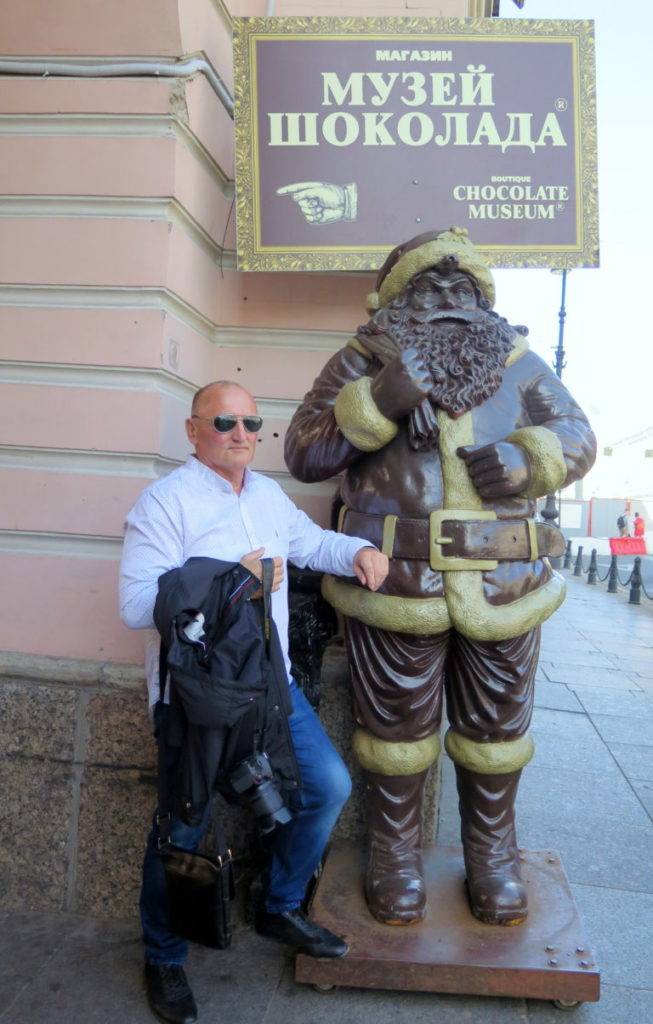
The Kazan church is named after the Holy Icon of the Mother of God of the same name. In addition to this iconic, highly respected icon in the Orthodox world, the famous Field Marshal Mikhail Kutuzov, who defeated the French army under Napoleon in 1812, rests in the church. Here in front of the church are the monuments of the legendary warlord, as well as Michael Berklay de Tol.
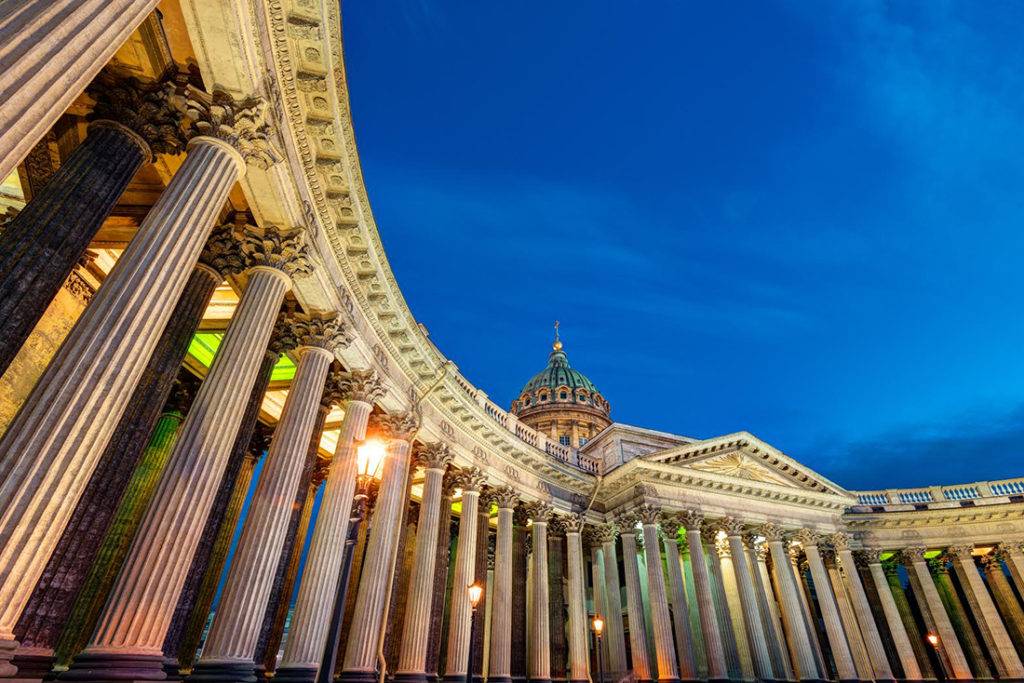
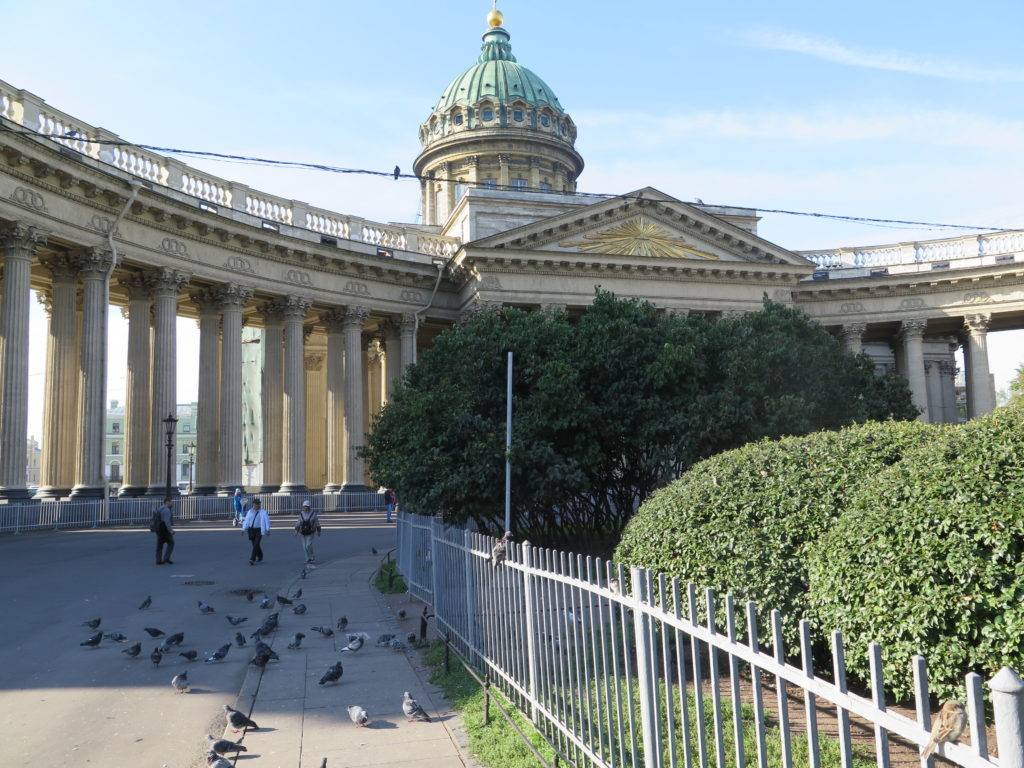
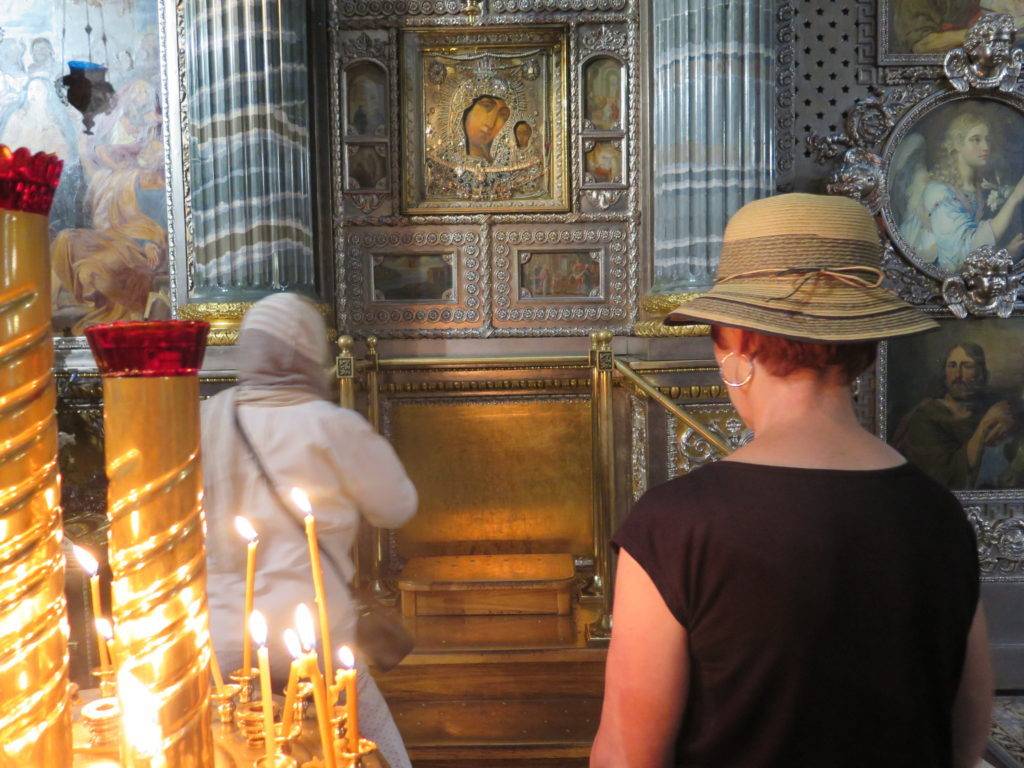
The Kazan icon of the Mother of God is greatly respected in Russia 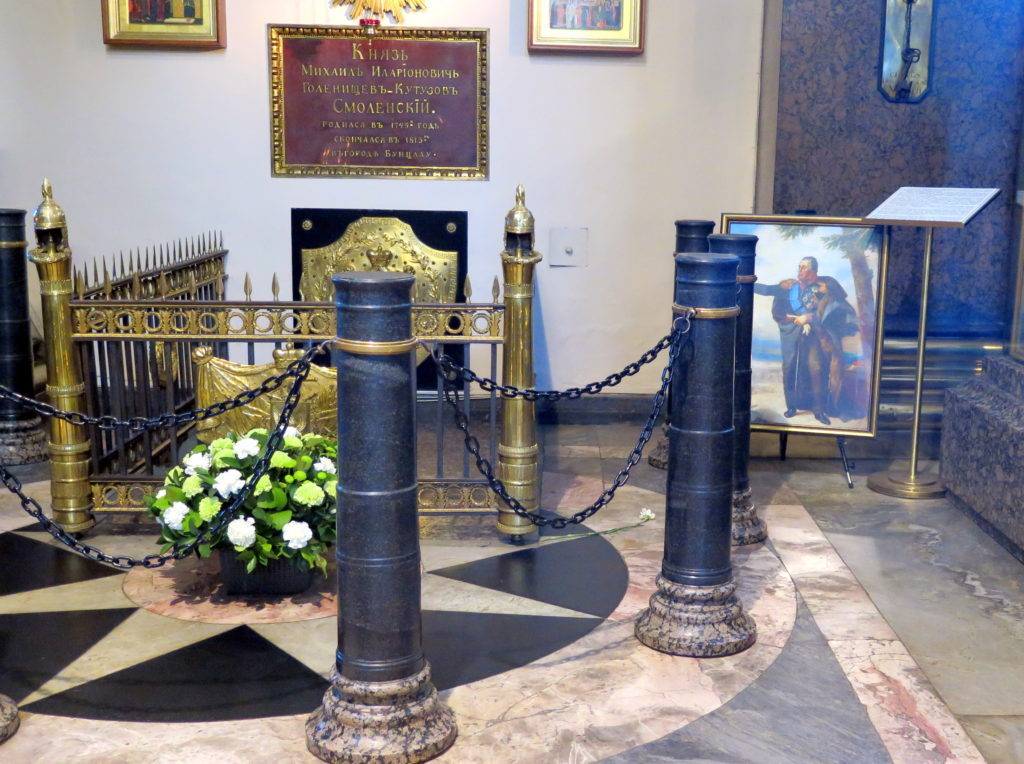
Kazan Parliament: Field Marshal M. I. Kutuzov rests here.
Bronze Horseman (Mednij vsadnik)
The Bronze Horseman is a monument to the founder of the city, Peter the Great. The monument is set on a huge rock (“Thunder Stone”- “Grom-kamen”) shaped like a sea wave. According to legend, before being transferred to the Neva coast, the “Thunder Stone” was a sacred stone of tribes who lived in the area long before the founding of the city. In front of you, surrounded by the park, is a yellow building of the Admiralty. You cannot enter it because it belongs to the headquarters of the Russian Navy.
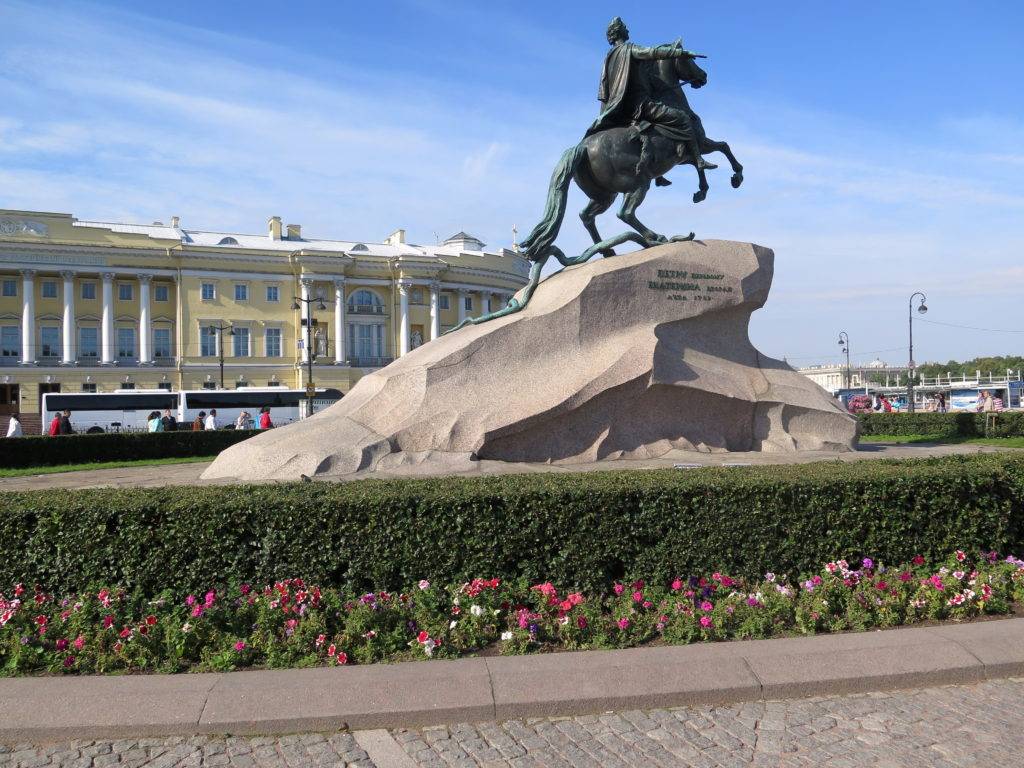
Pushkin called him a “bronze horseman.” Legend has it that while the monument is in the central part of the city, it cannot be occupied by foreign powers. This legend is symbolized by a horse treading a snake. From the granite pedestal, Peter the Great leads Russia into a bright future. I used oportunity and took a photo with one of the ladies in the garments of Imperial Russia.
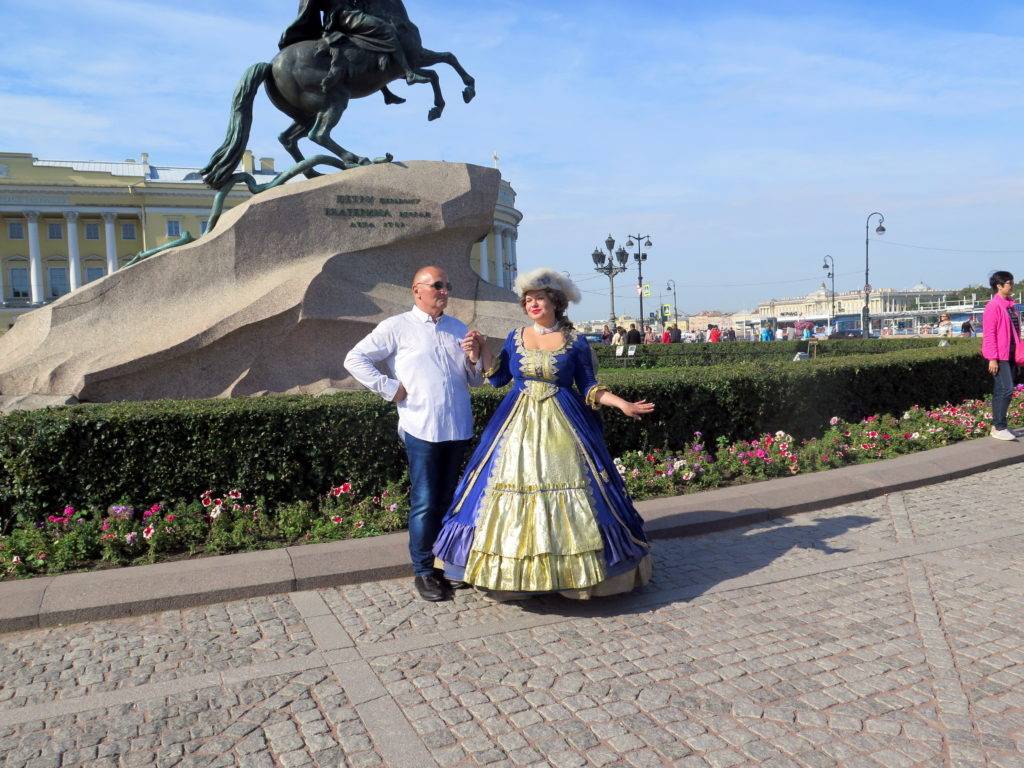
On the stone is engraved: To Peter I from Catherine II, and we pose a little …
Hermitage
A tour of the Hermitage, one of the oldest and largest museums in the world, with a collection of 3 million works of art and cultural artifacts, can be freely called “fitness preparations” for the tour of the city itself, since the total length is more than 20 kilometers.
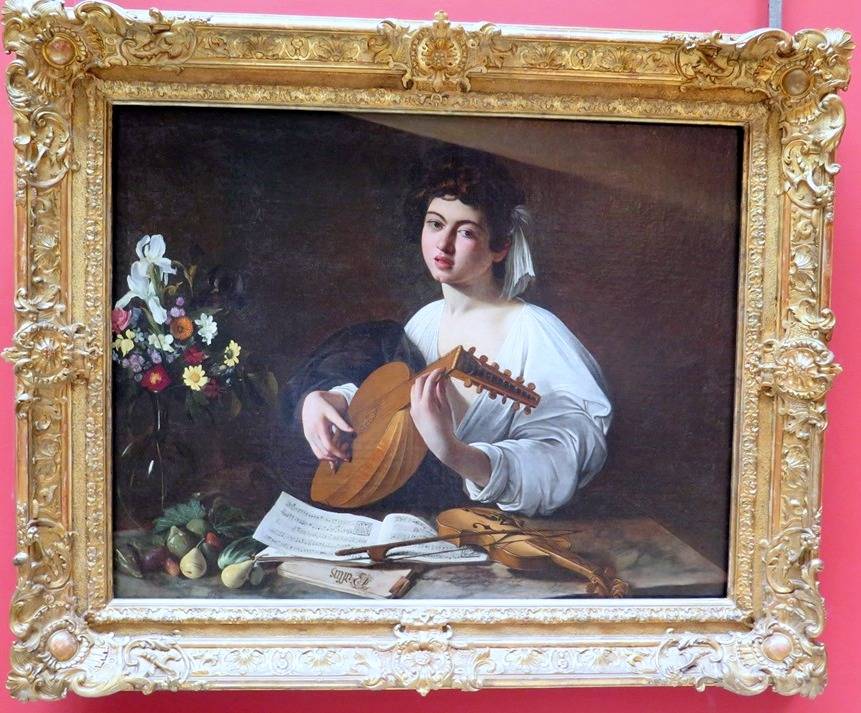
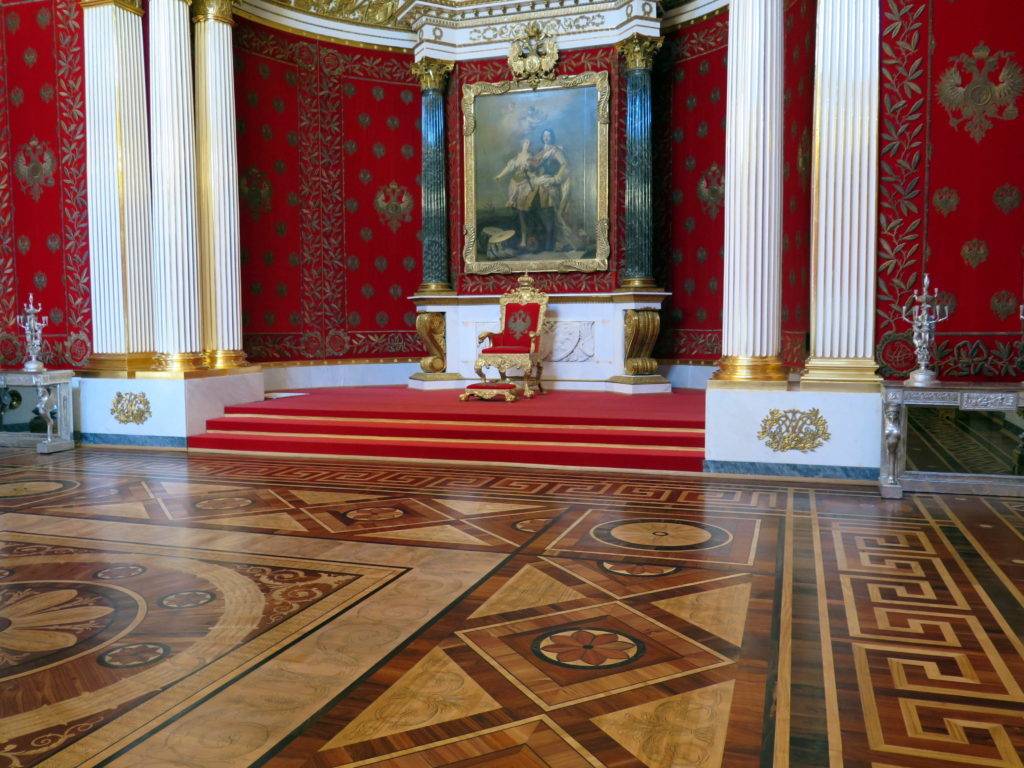
Hard-working statisticians have calculated: the total area of the Hermitage is 233,345 square meters, the exhibition space is 66,842 m2, and if you would like to see all the works for just 1 minute, the Hermitage will take you ” only ” 8 years to live. In this huge building, there is nothing less than 1786 doors, then 1945 windows, for which glazing used 23000 window glasses, and 1057 rooms and halls. About 2.5,000 stone-cutters beautified the castle, whose main facade is reflected in the waters of the Neva. Visiting a huge collection of art objects from all over the world, from the Stone Age until the end of the 20th century, I also enjoyed the magnificent authentic rooms of the former imperial castle in the Hermitage.
In the war gallery we look at the portrait of Field Marshal Kutuzov, as well as General Raevsky, Jermolov, Voroncov and other famous heroes from the Fatherland war against Napoleon. With its beauty stands out a parade portrait of Emperor Alexander I, which is painted riding a horse, while in the background is the French capital Paris.
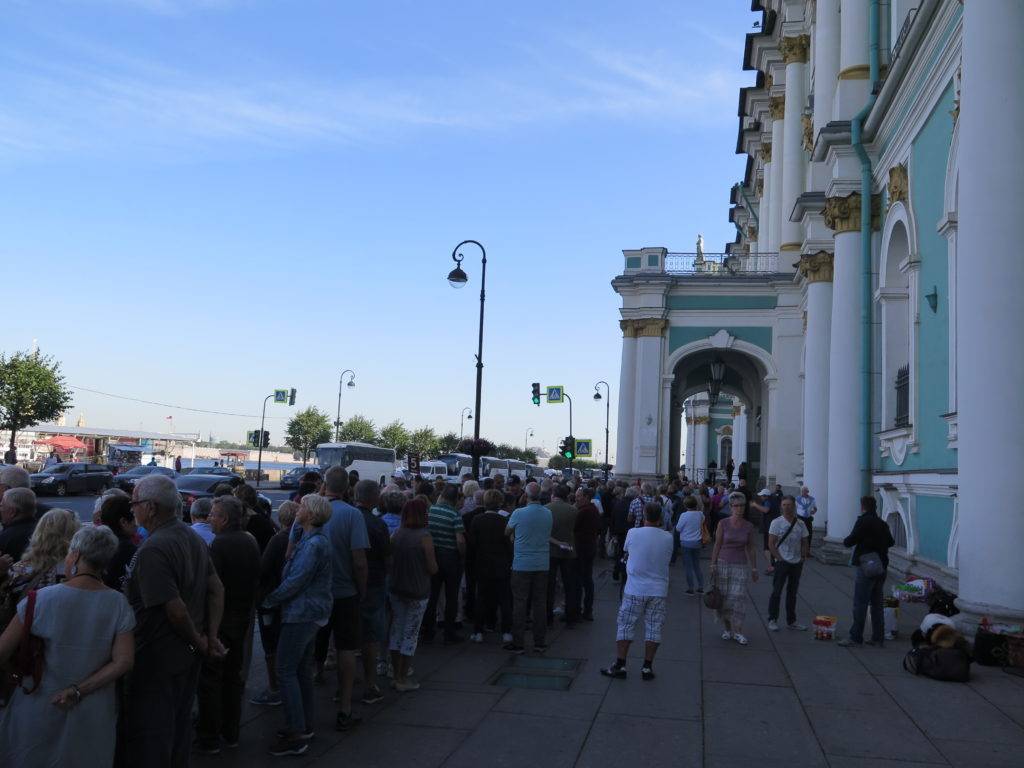

The walls of this magnificent temple of art are adorned with extraordinary paintings by Leonardo da Vinci, Titian, Rembrandt, Rubens, Tintoretto, Goya, Renoir, Mone, Picasso, Van Gogh and many other famous and immortal artists.
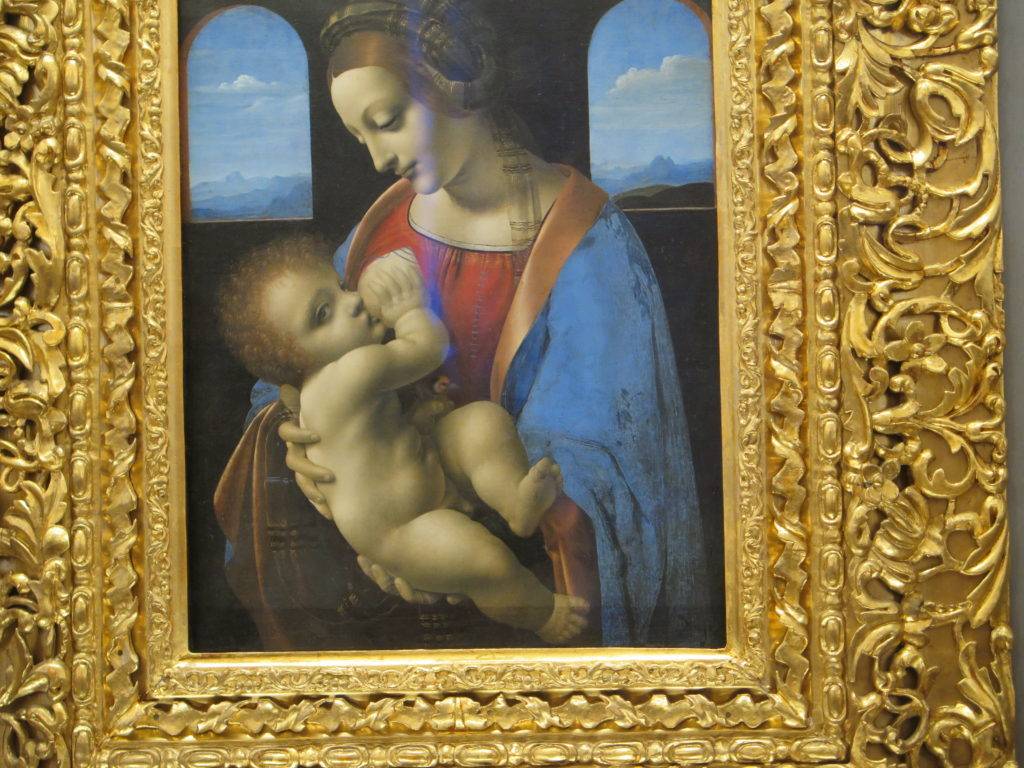
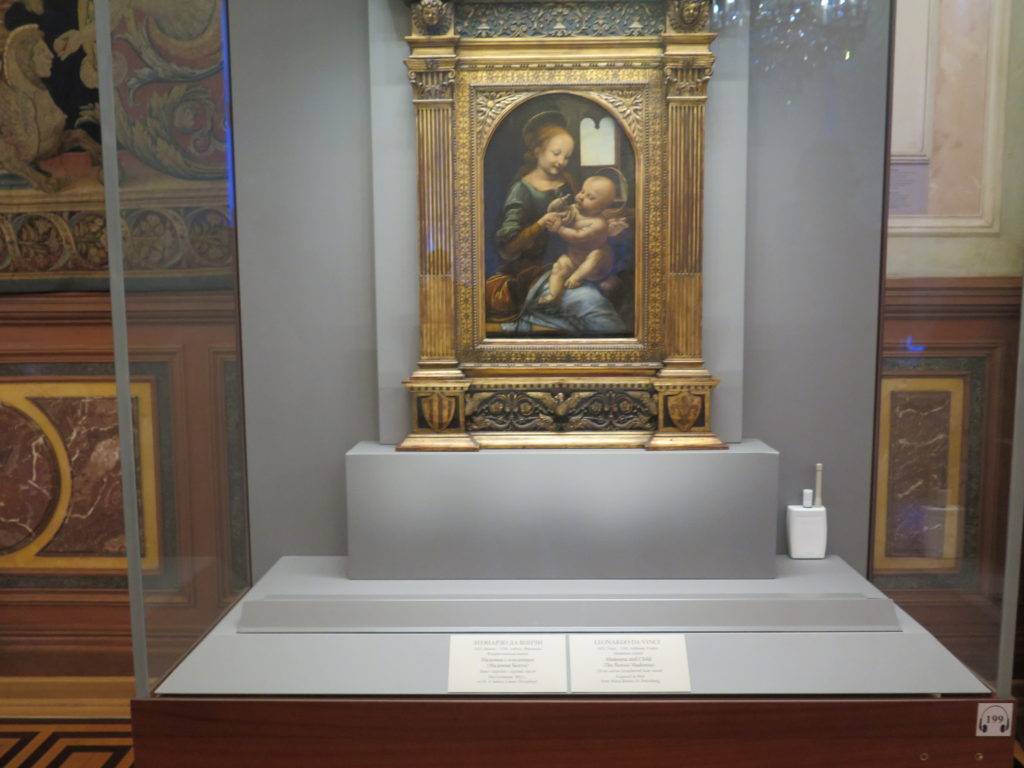
Ermitaż – Leonardo da Vinci Hall
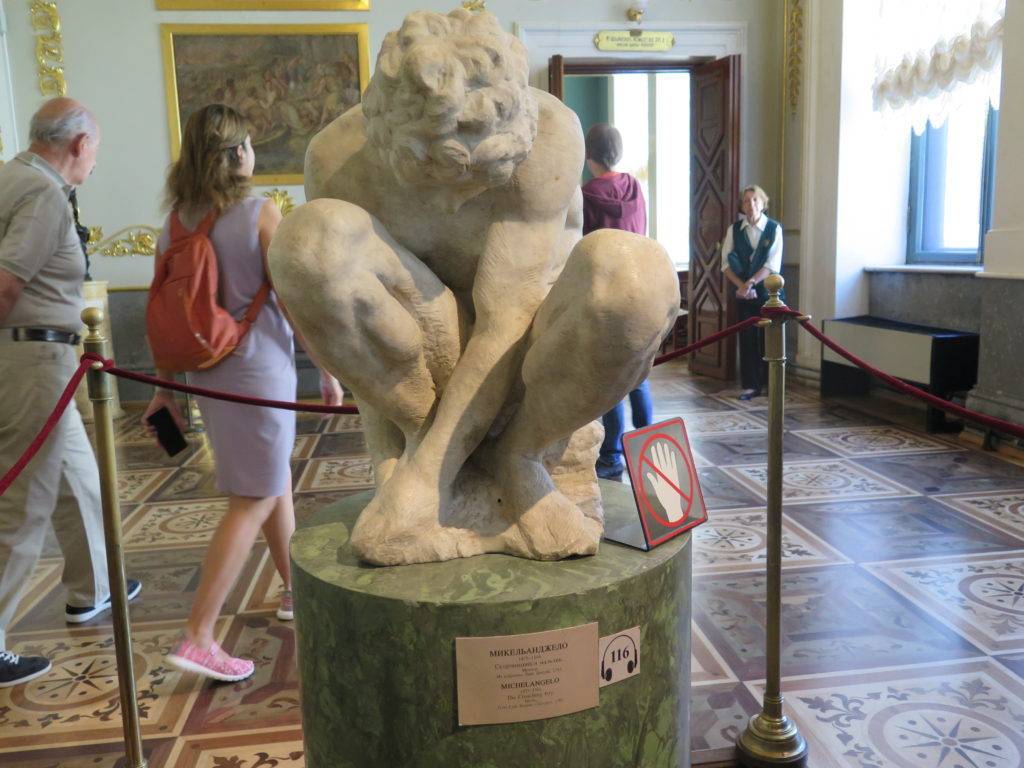
“Military Gallery 1812”
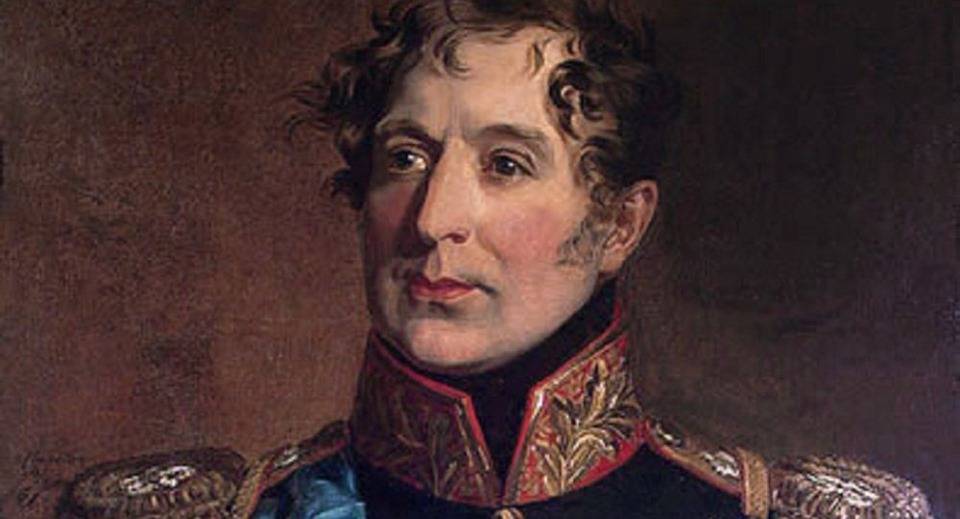
The Russian Count and General Miloradovic, a descendant of the Serb-born Miloradovic from Herzegovina, was born in 1771 in family of a close associate of Peter the Great, and for a time was Mayor of St. Petersburg.
There are 332 portraits on these walls, of all generals and above, of marshals, field marshals who participated in the war. There are also “empty” portraits, those whose character they do not have. There is also a portrait of General Miloradovic.
Mihailo Miloradovic’s ancestors came from Herzegovina, from the vicinity of Mostar, back in the time of Peter the Great. He was born in 1771 into a Serbian family that was close to the Russian Emperor. Mihailo Miloradovic is originally from Herzegovina and whose grandfather was Peter the First’s companion in war. He, General Miloradovic, was a duty general in Suvorov’s Italian campaign, in the Swiss campaign and by Kutuzov when Napoleon was expelled from Russia.
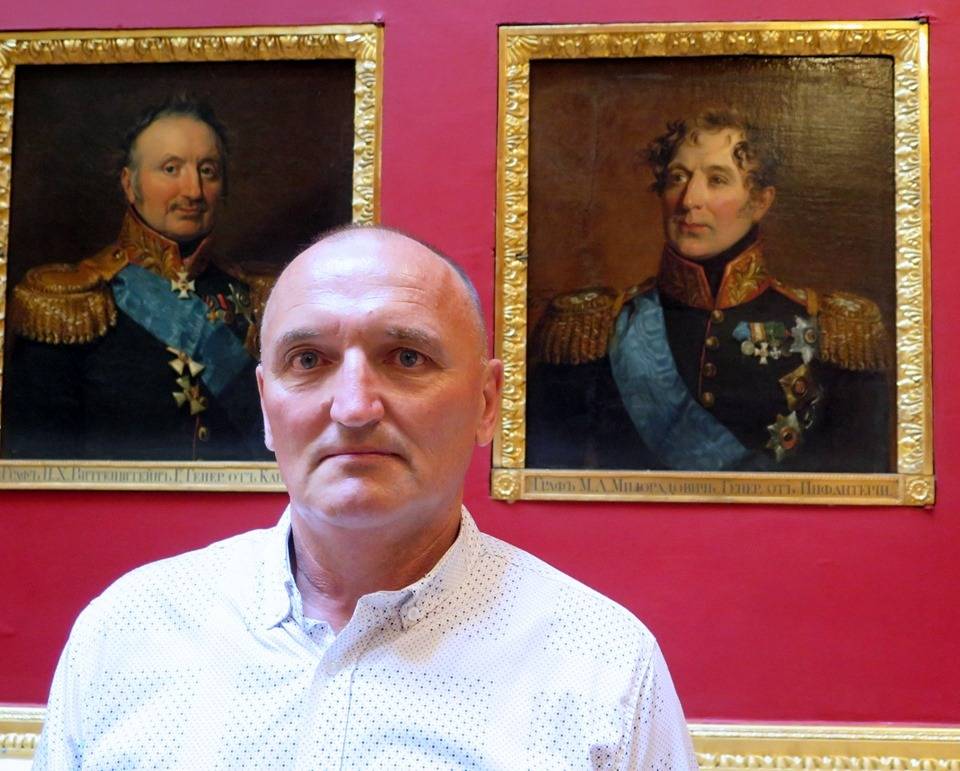
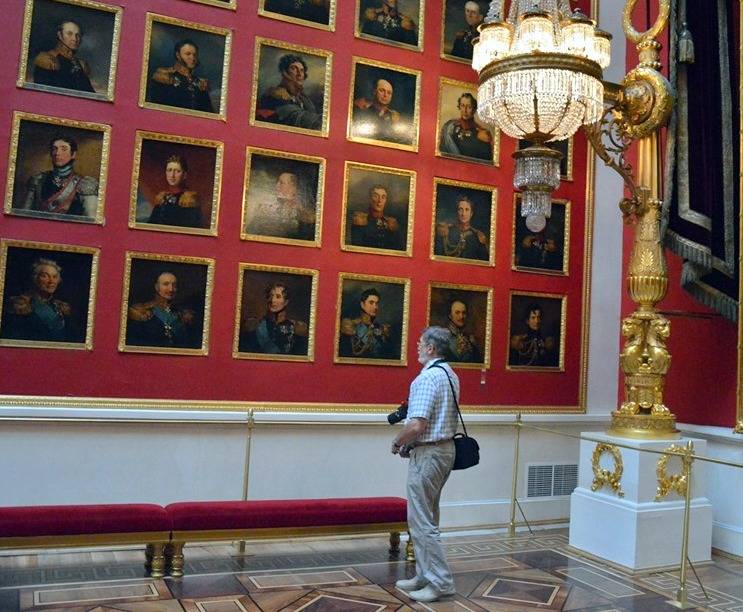
Cathedral Church of Sv. Isak
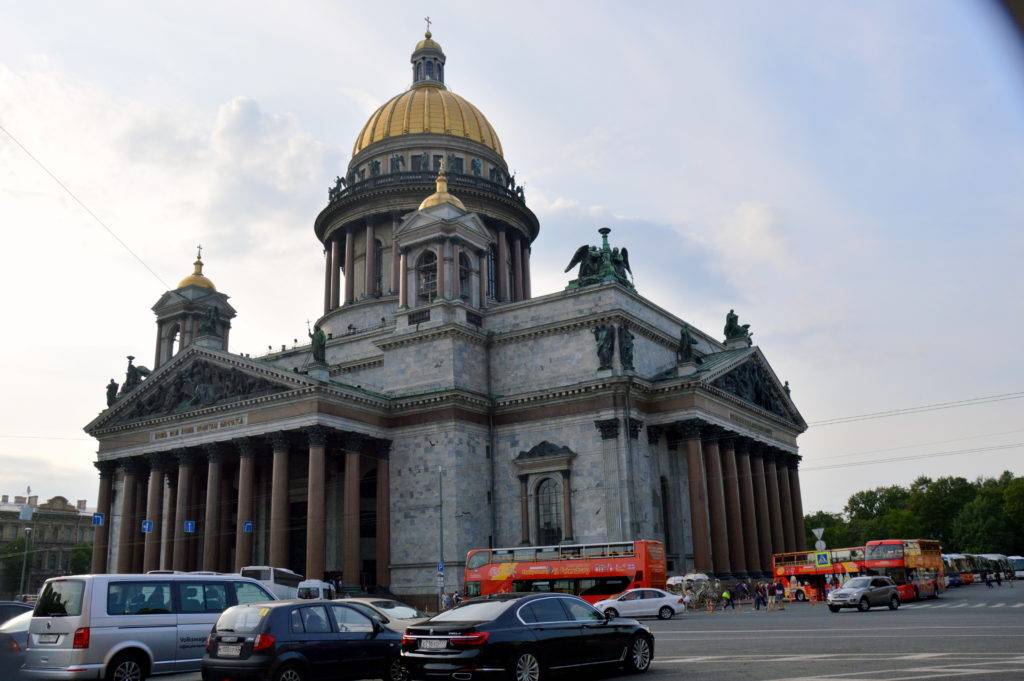
Cathedral Church of Sv. Isaac was built for 40 years, from 1818 till 1858. The cathedral weighs 300,000 tons and its dome is covered with pure gold and never restored. The former court church, St. Isaac’s Church, now a museum, is a completely uncharacteristic Orthodox church in architectural terms and was probably modeled after the cathedral in Rome. Today is a museum.
The cathedral was built between 1818 and 1858 by a French architect. Over 40 types of materials were used to build the cathedral. The cathedral is built in the spirit of neoclassicism. It is 101.5 meters high and covers an area of one hectare. Angels on the outside decorate the dome of the church. It is the fourth domed church in the world after St. Peter in Rome, St. Paul in London and Santa Maria de Fiori in Florence. About 14,000 people can fit into the main hall of this temple.
Since 1931, the temple has functioned as a museum, and as far as I can hear, it has been negotiated to restore the Russian Orthodox Church.
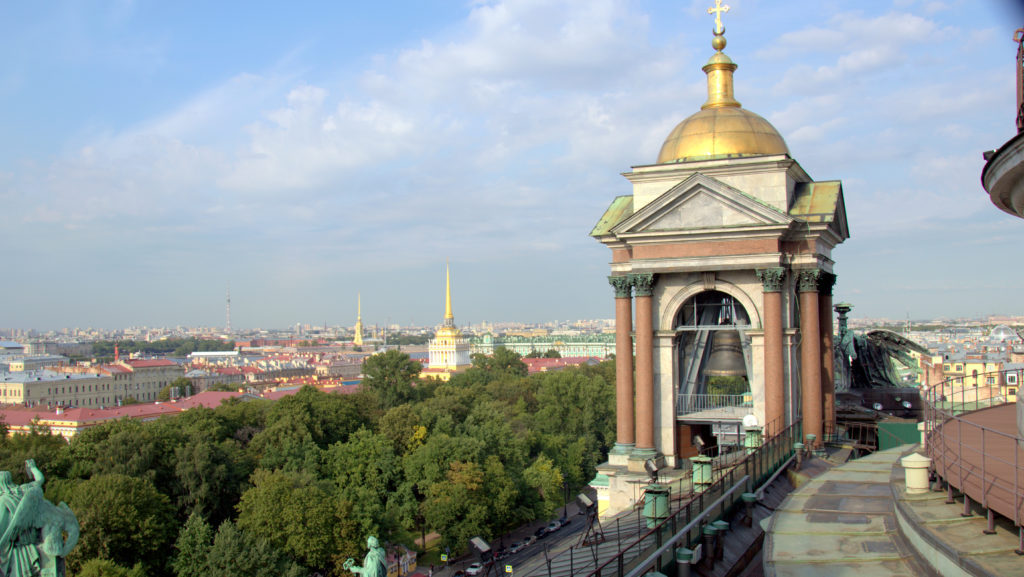
Wonderful view of the Peter and Paul Fortress and the Winter Castle
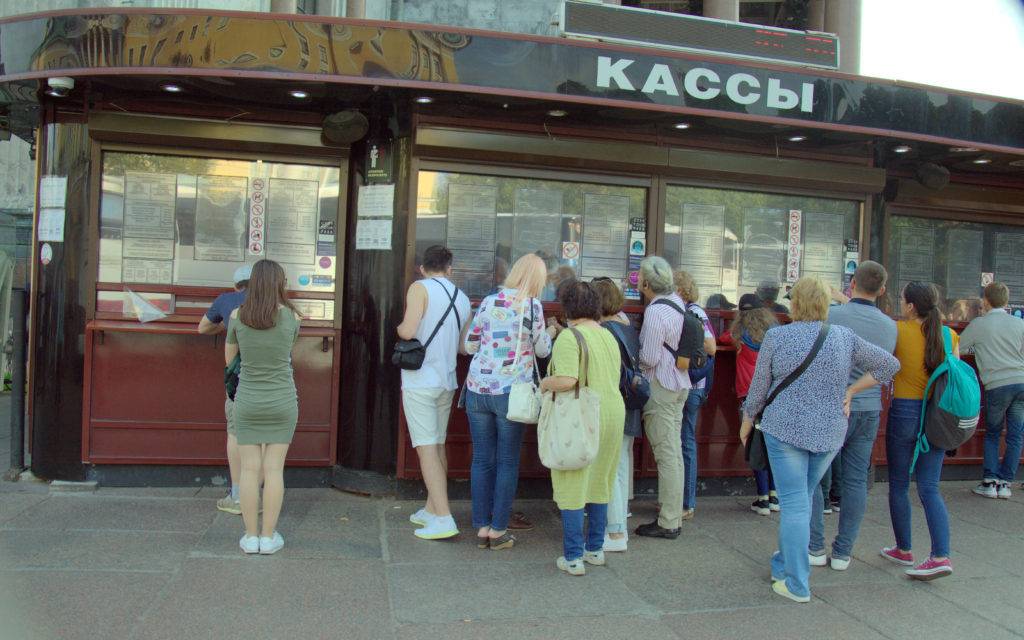
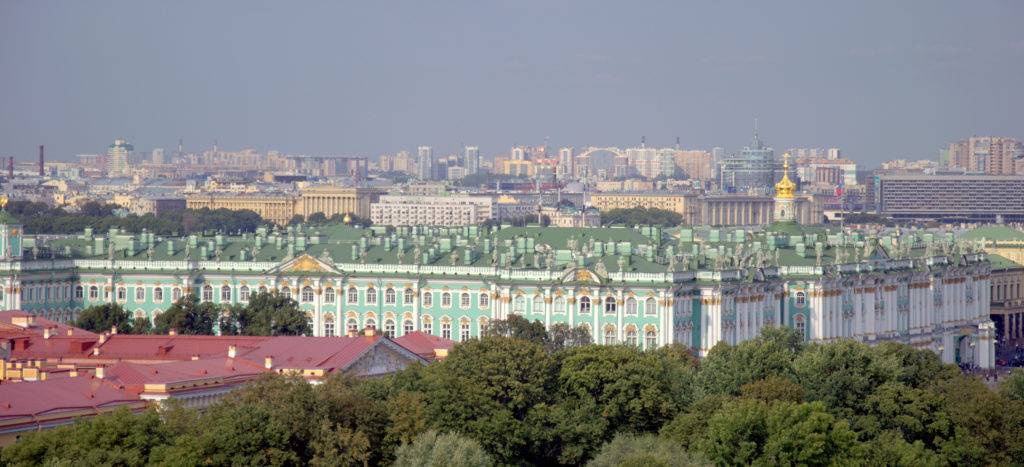
Yesenin
I drink coffee and rest at the Angleterre Hotel, where my beloved poet unhappily ended his short life. I look out the window at the monumental temple dedicated to God-Isaccs Council and remember the verses
“Goodbye, buddy” – Sergei Jesenin – “Goodbye, my fairy tale! …”
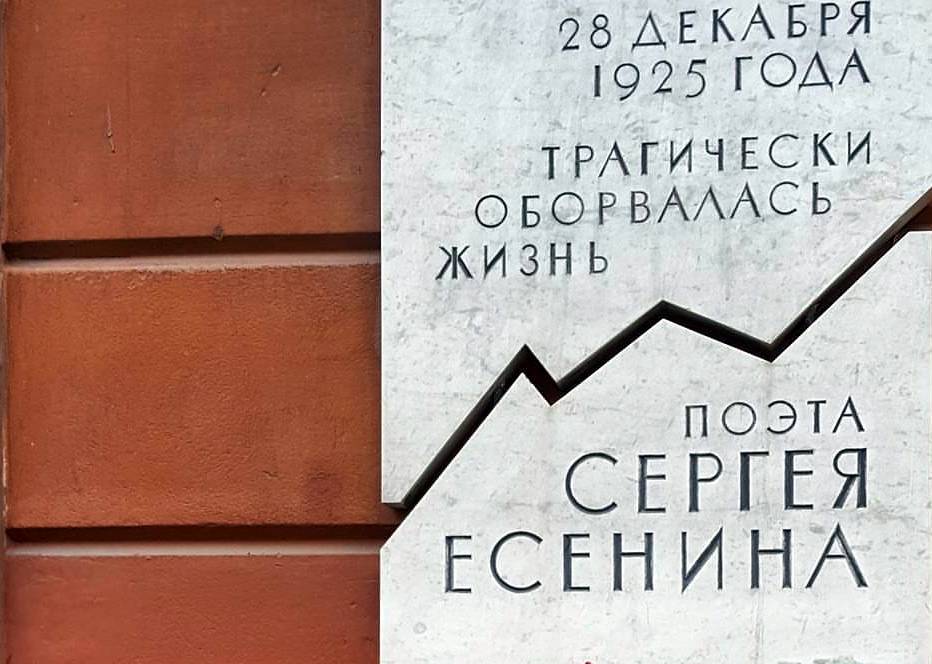
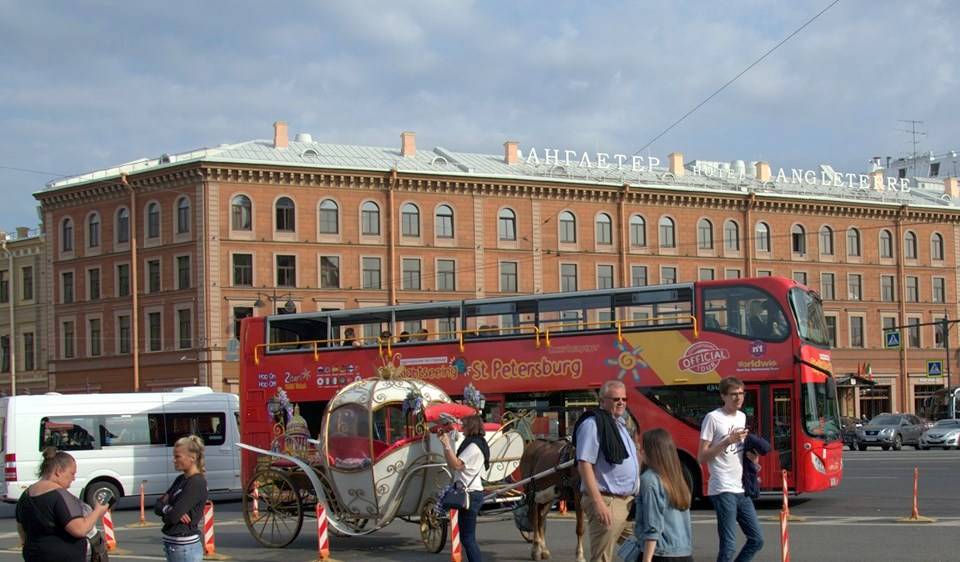
The place of death of the famous, early deceased poet – Sergei Jesenin.
Angleterre Hotel
The place of death of the famous, early deceased poet – Sergei Jesenin.
St. Petersburg combines its rich Russian heritage with a distinctly European look.
The biggest names of Russian and world literature are connected with St. Petersburg: Lav Tolstoy, Alexander Pushkin, Vladimir Nabokov, Fyodor Dostoyevsky… Most of their homes have been converted into museums. The whole city is full of famous places and streets named by famous person in some way.
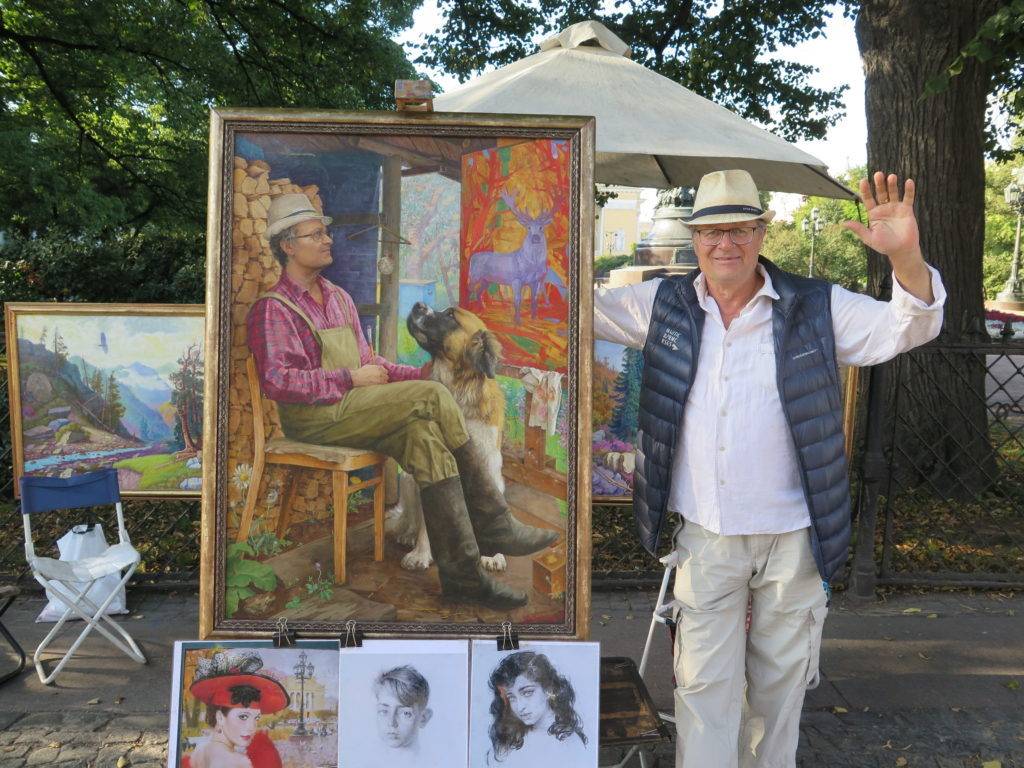
When we walk through the streets of St. Petersburg, we often come across artists of different profiles, such as painters …
It could be days, in sequels, in separate stories, to write about this wonderful city, because there is so much to say about it… Trying to list only the most significant buildings and historical sites, and I know in advance that I will be wrong, because I will not state a small part of what this city certainly deserves. Everything impresses here.
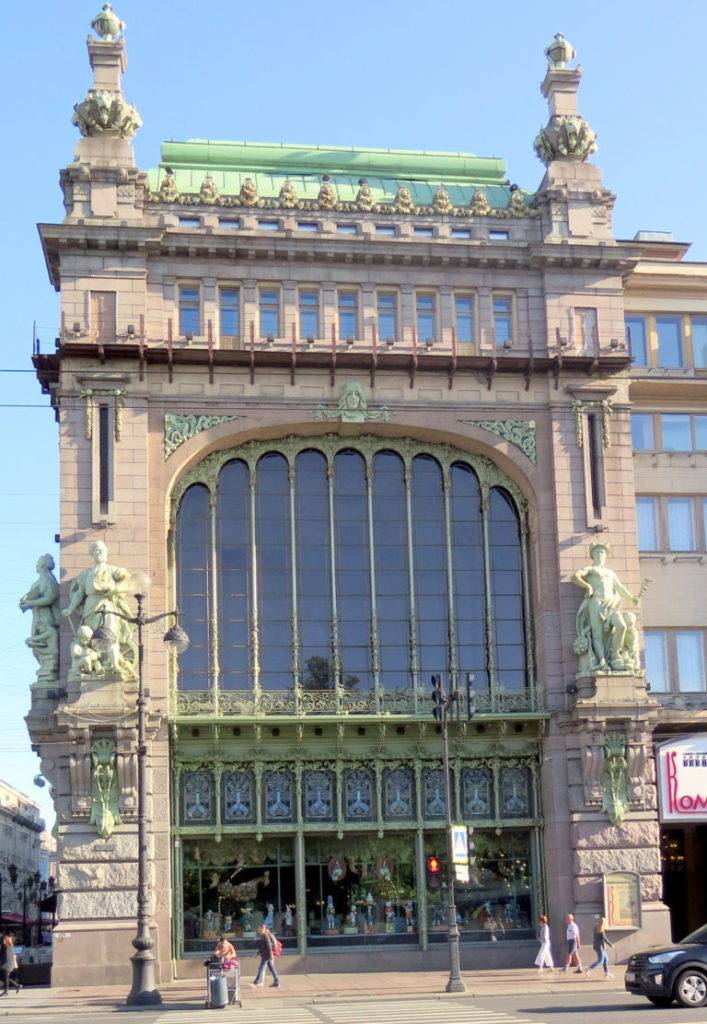
A famous showcase with moving dolls representing the characters from the fairy tale “Krcko Oraščić”. The building houses a well-known candy store.
Swan Lake
If a nation has become a symbol of ballet and opera over time, then it is Russian. Russian ballet is one of the oldest ballets, and the Marinski Theater is one of the oldest in the world. The Marinski Theater is named after the wife of Emperor Alexander II, Empress Maria Alexandrovna. The Imperial Lodge, with its eagles, curtains and shining bright chandeliers, is a vivid witness to imperial Russia.
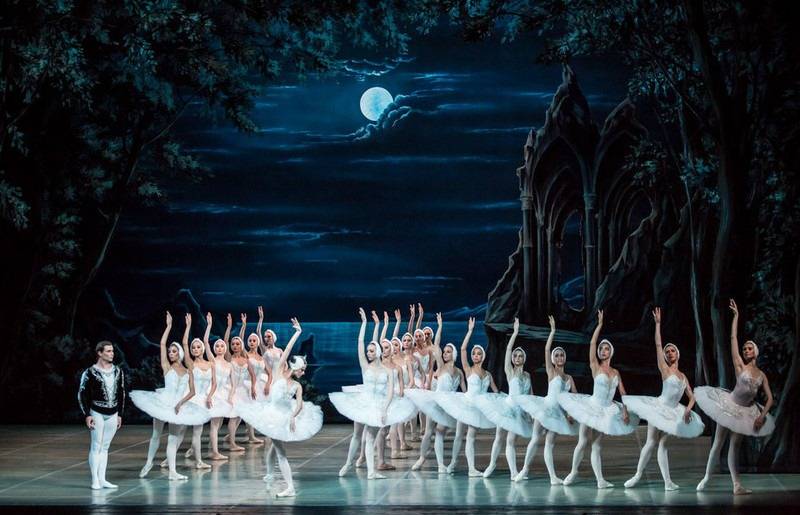
I was fortunate to attend the Swan Lake Ballet performed by the Marinski Theater on the stage of the Great Drama Theater, named after G. A. Tovstonogov. This has to be seen!
Alexander Nevsky
In addition to all the numerous beauties, I was delighted by Alexander Nevsky’s monastery (laurel), a festival of the sound of their bells, and a special and very emotional experience was listening to the Nevsky bell, which the bellman plays, he is musically more than educated.
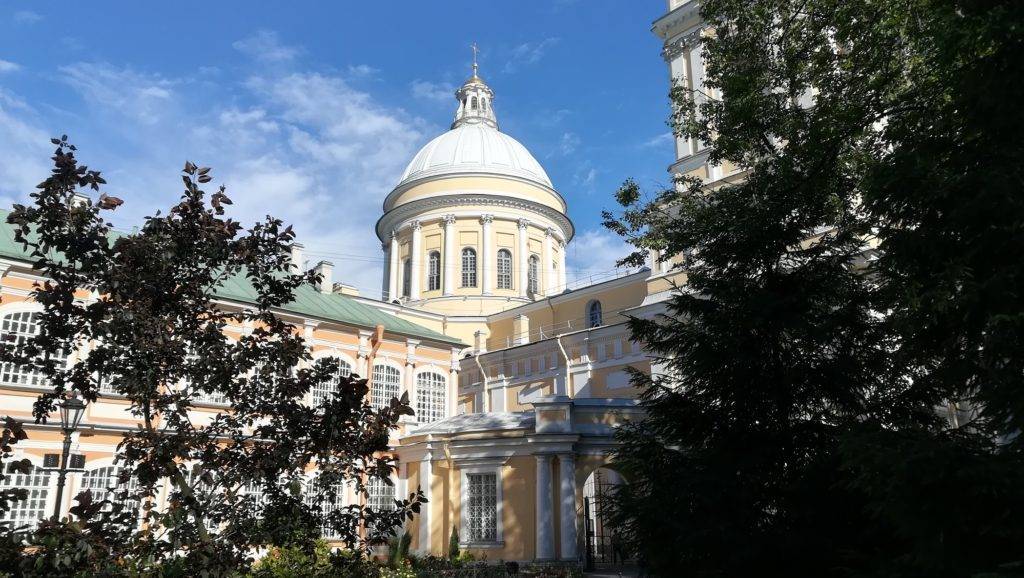
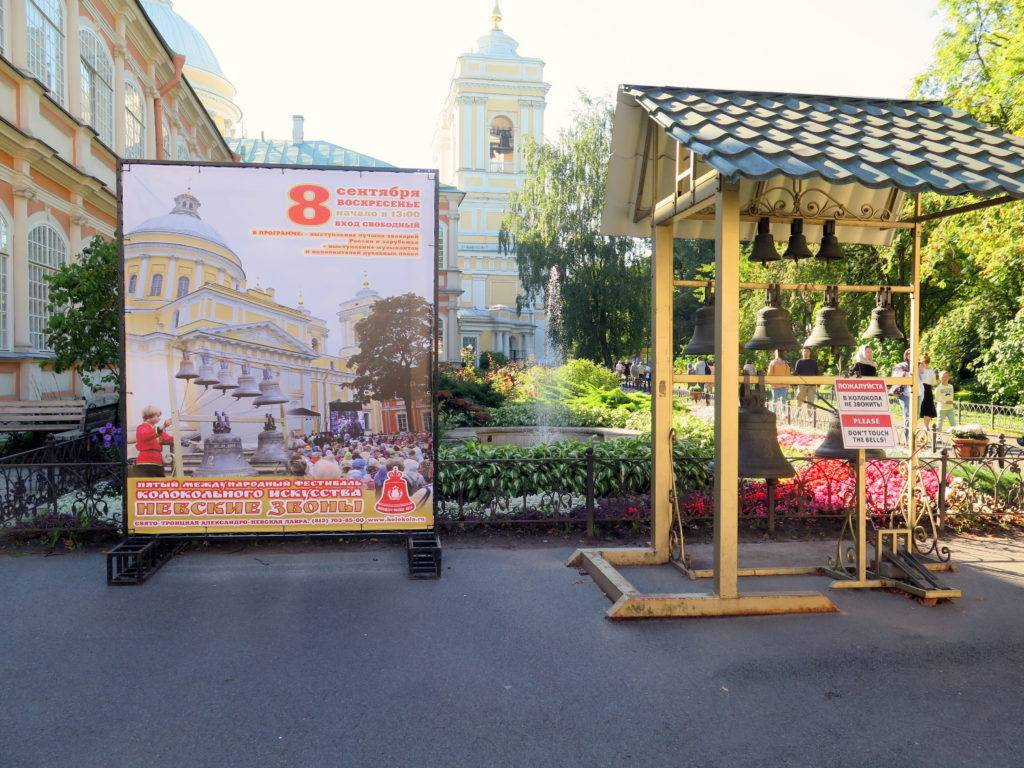
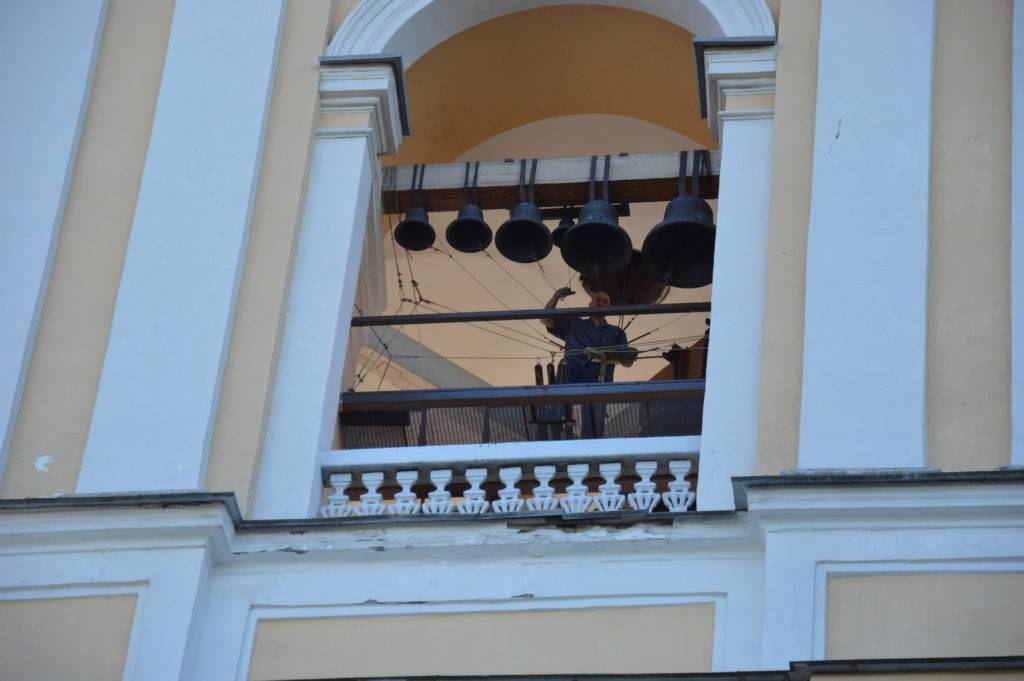
Miloradovic – the third time
I ” saw” General Miloradovic three times. The first time when I arrived, at the Triumphal Moscow Gate, where a monument was almost set for him. The second time in the Hermitage in the War Room in 1812, he had a portrait with over 300 significant military commanders. And now for the third time in the church at the entrance to Alexander Nevsky Monastery, which is currently a museum (as a result of October revolution) where he rests with his teacher and Commander Suvorov, among others.
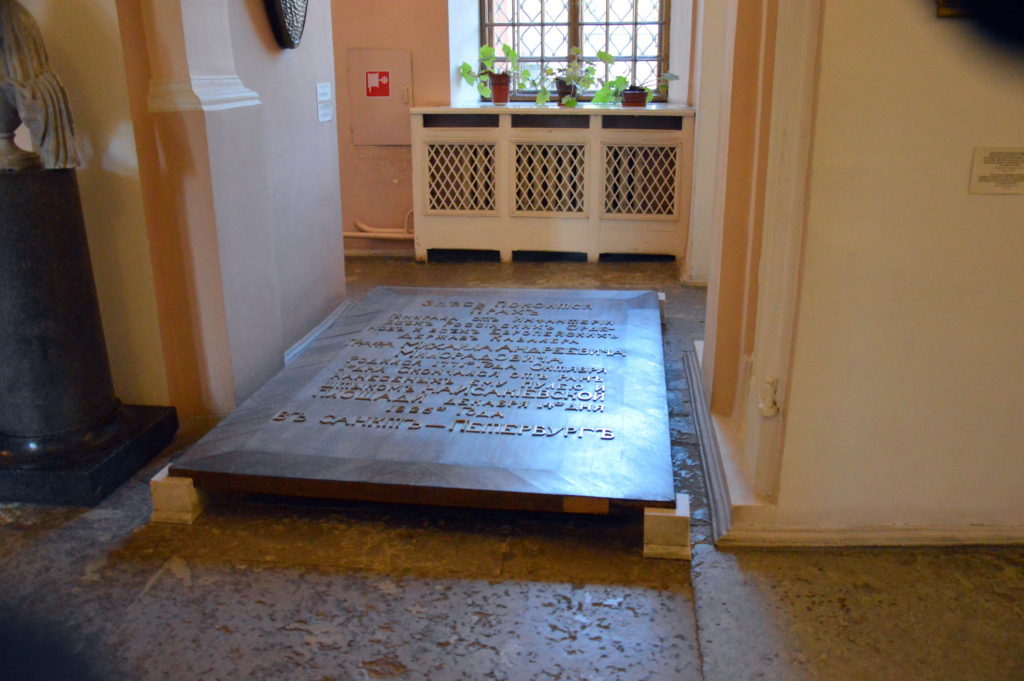
In the same crypt are the tomb of Miloradovic’s teacher and commander of famous Russian General Suvorov.
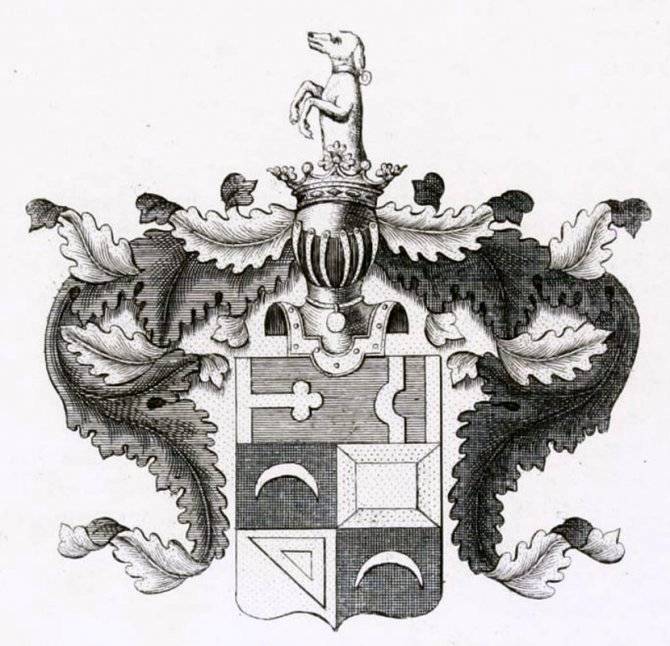
Tihvin Cemetery
The Tihvin Cemetery is one of the most important sights of St. Petersburg. Many legendary figures were buried there, such as Fyodor Dostoyevsky, Tchaikovsky, Mussorgsky, Rubinstein, Stravinsky, Rimsky-Korsakov, Glinko and Lomonosov.
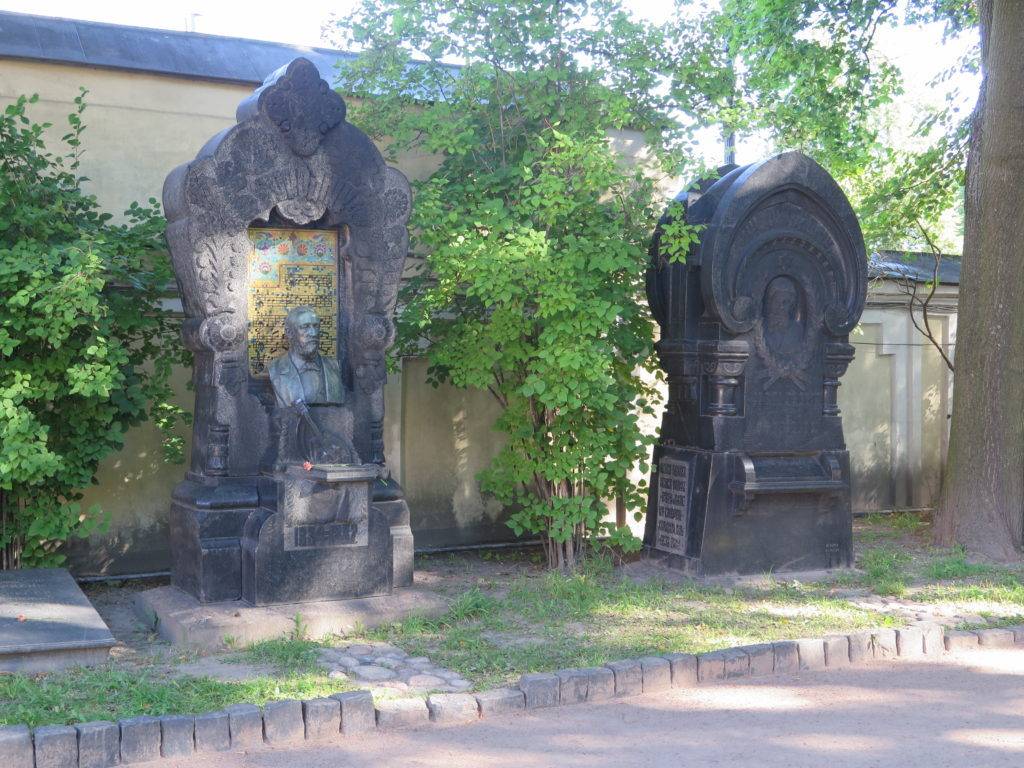
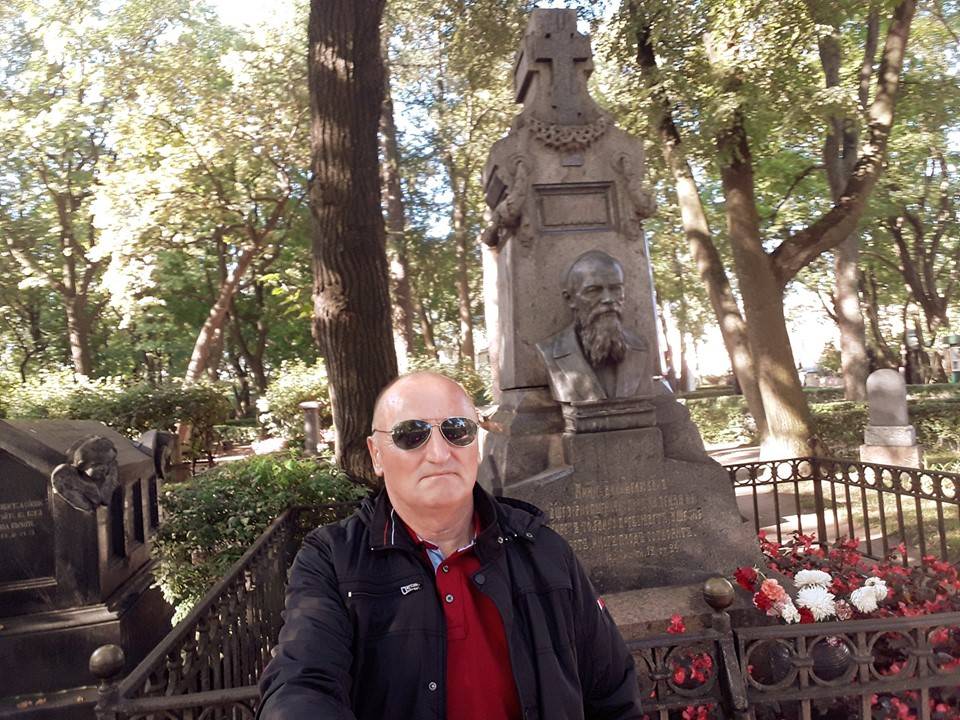
Petrohof
The largest fountain in the world is located here – the Great Cascade. The most beautiful is the Samson Fountain and the lion. The park and castles of the Peterhof complex are located 20 kilometers from St. Petersburg and are under UNESCO protection. The Peterhof was proclaimed a museum in 1918, and until that time it was in the function of a summer imperial residence. The main castle was destroyed during the Second World War and its restoration is still being done today.
Peterhof is known as the Russian Versailles, as well as the Russian capital of magnificent fountains. Although St. Petersburg is the fourth largest city in Europe, it is easy to pick out some of the most beautiful attractions that are definitely a must visit. Peterhof is one of them. It is a complex of palaces and parks of Peter the Great, which was modeled after the famous Versailles, which is also called the Russian Versailles. The gardens are dominated by fountains of more than 170, and the entire complex is the most faithful testimony to national and international culture as architects and artists from all over the world have worked on it.
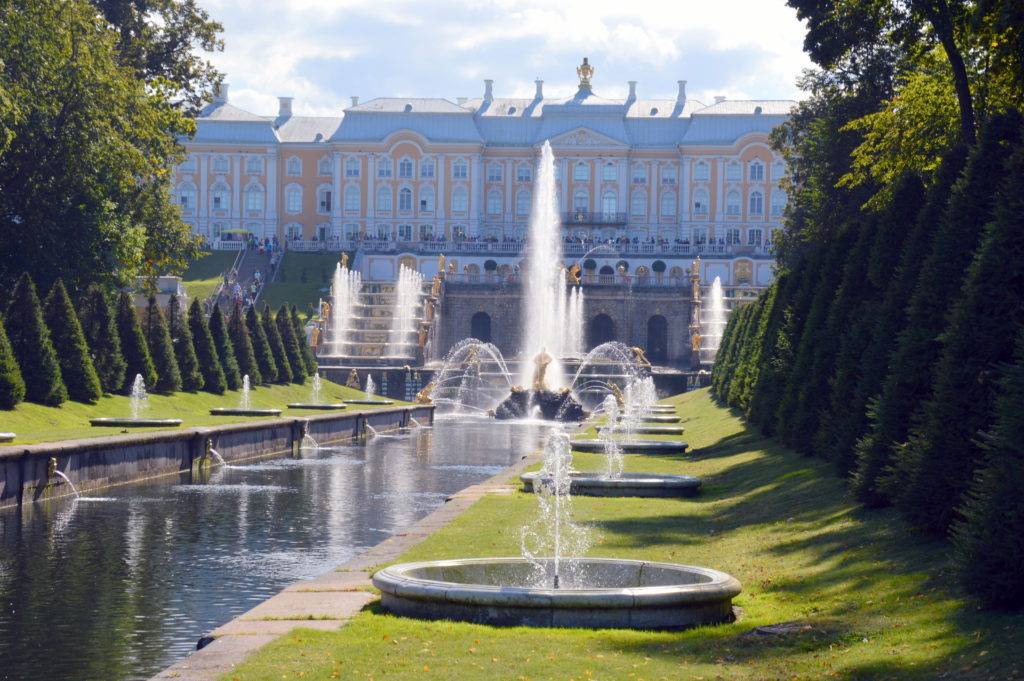
Peterhof Palace was the residence of Peter the Great. It is located on the Gulf Coast.
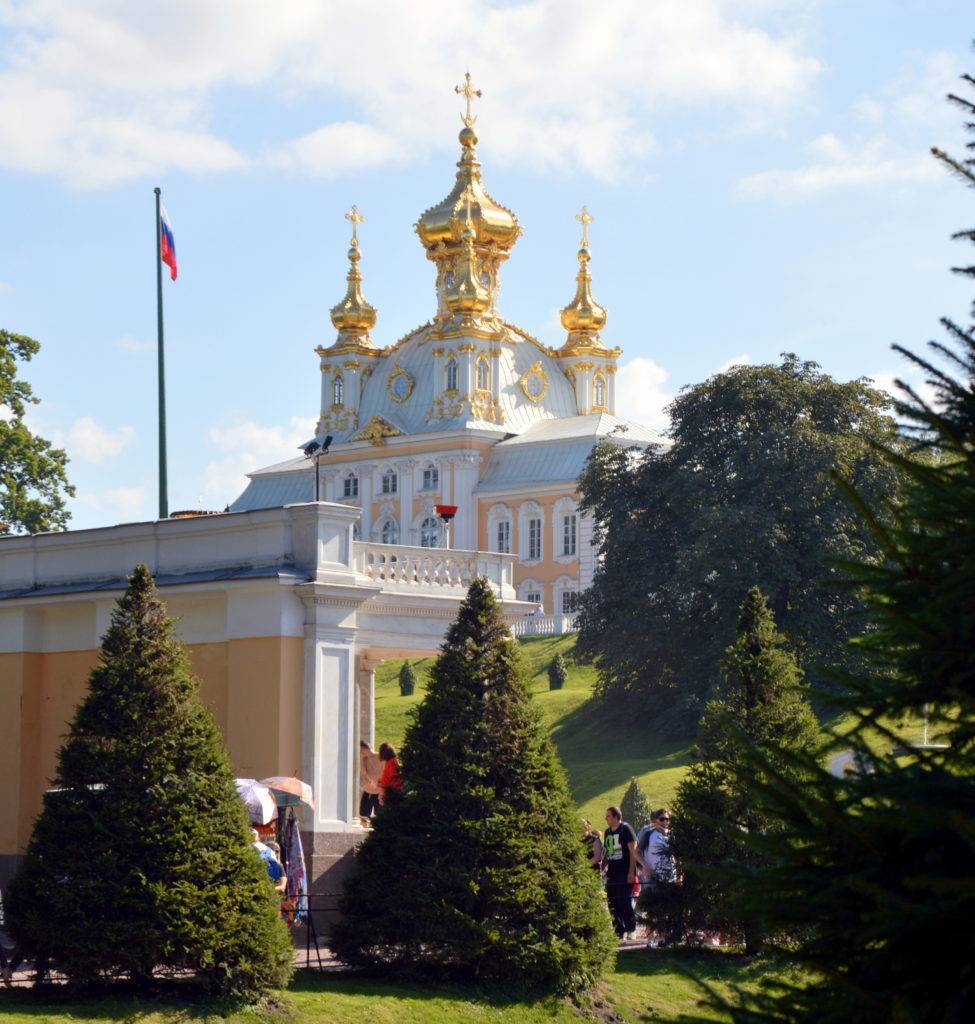
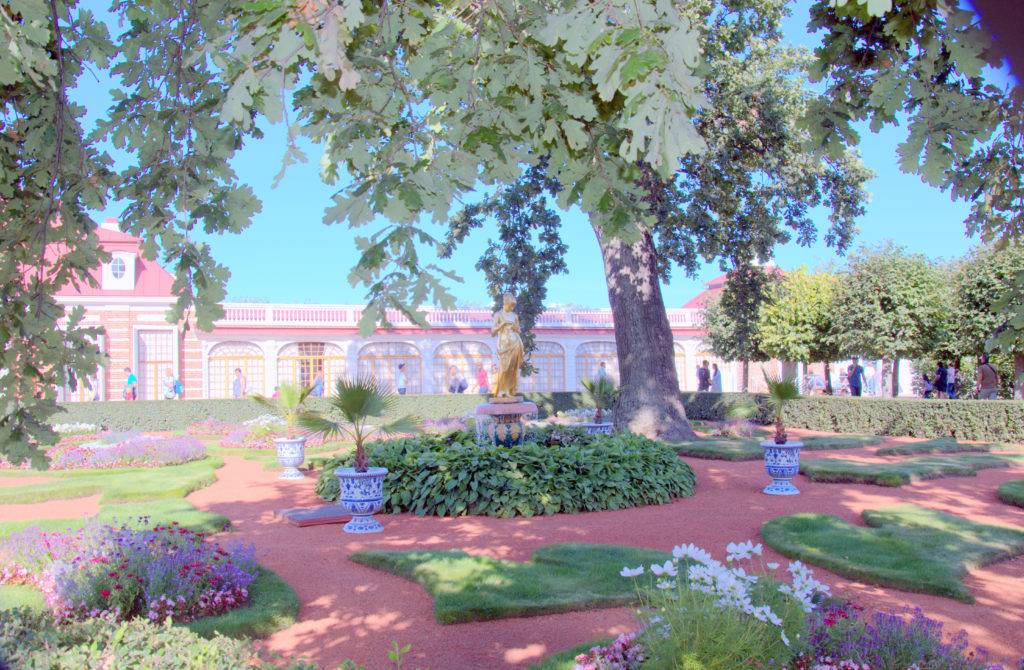
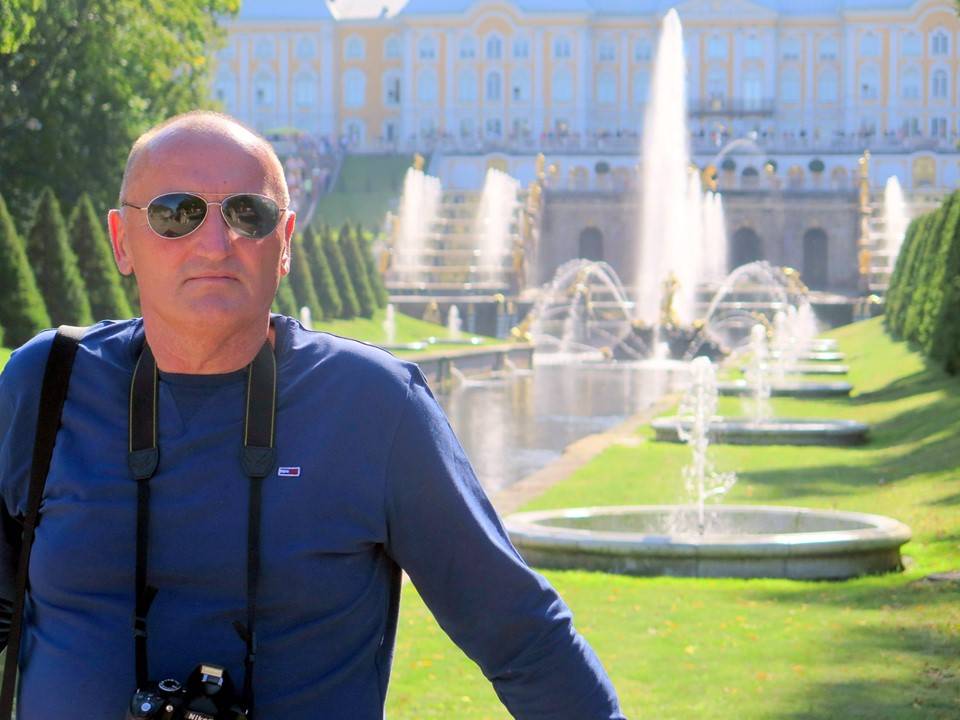
However, the castle over all the castles in St. Petersburg is the summer residence of Peterhof, which leaves you breathless by the beauty of the fountain. A major engineering endeavor has been made here, as 64 fountains operate without a pump.
The Church of Salvation on Blood
The Church of Christ’s Resurrection is the only church built at the site of the murder of the Russian imperior Alexander II. The church was built in his honor, and is today a museum.
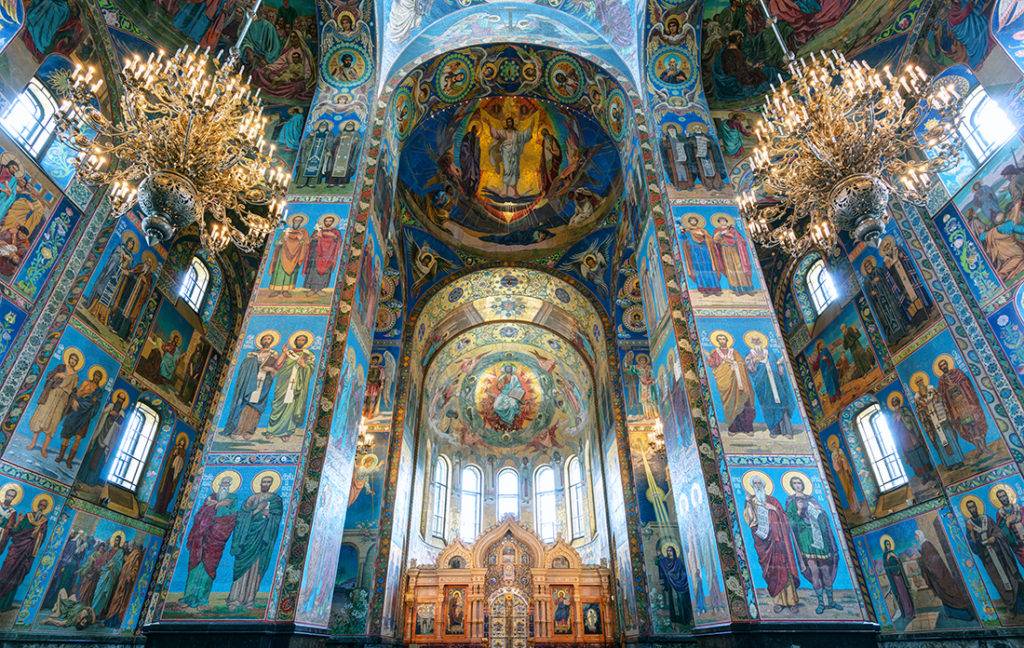
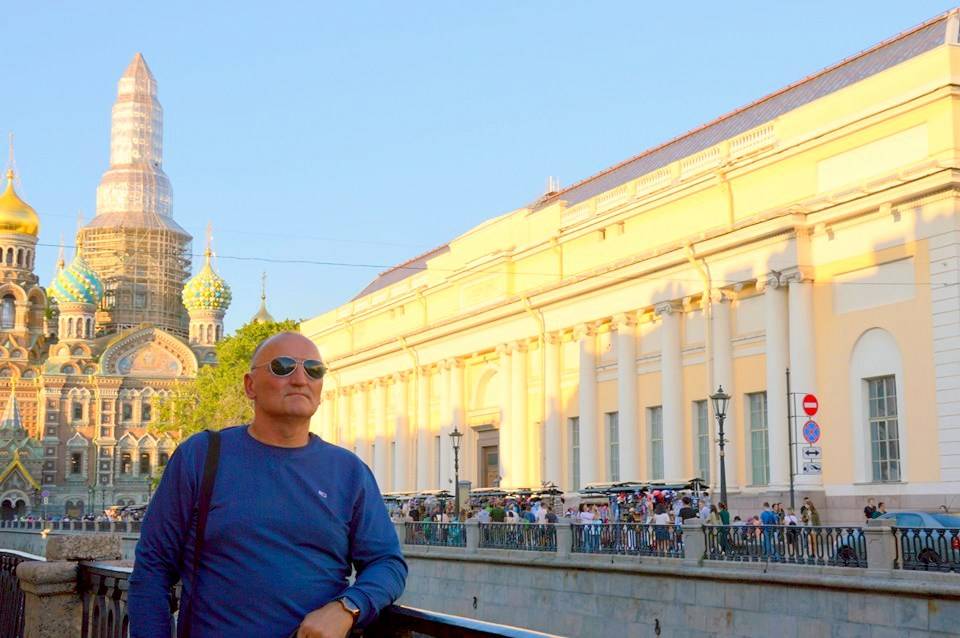
Faberge Museum – High-ranking tourist attraction
That I was fascinated with visiting the Faberze Museum is a little to say. This private museum exhibits an extremely valuable collection of jewelry made by the famous Russian jeweler Karl Faberze. The collection is the property of Russian billionaire Viktor Wexelberg. Part of the exhibits Wexelberg bought in 2004 from descendants of Malcolm Forbs.
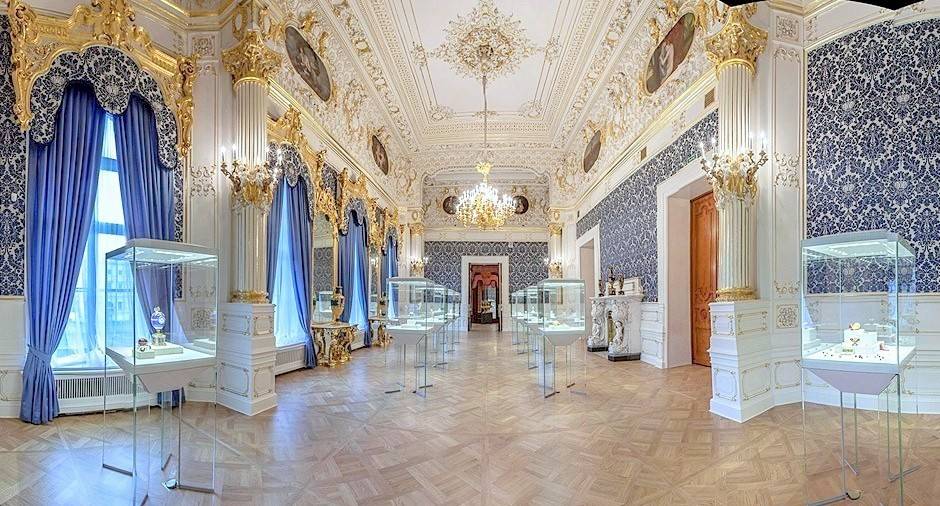
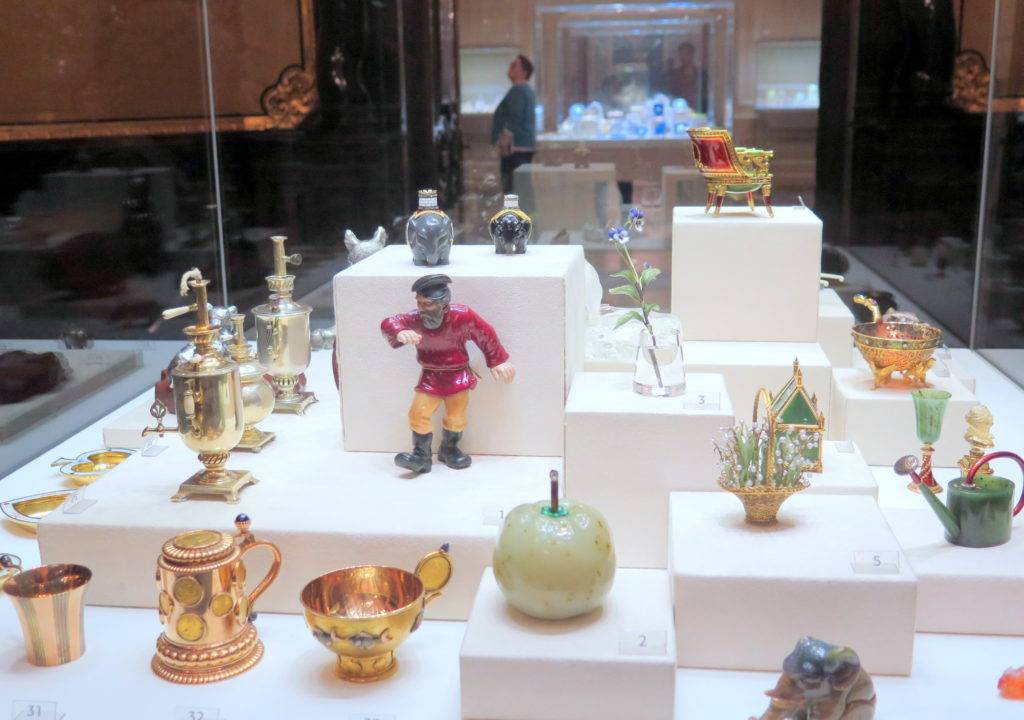
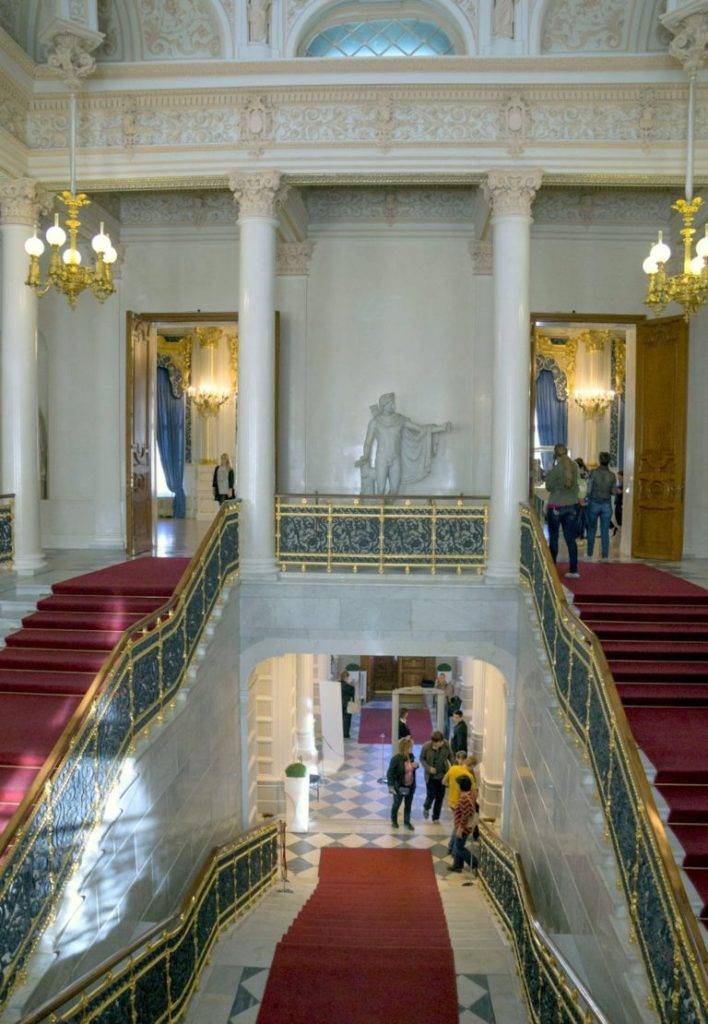
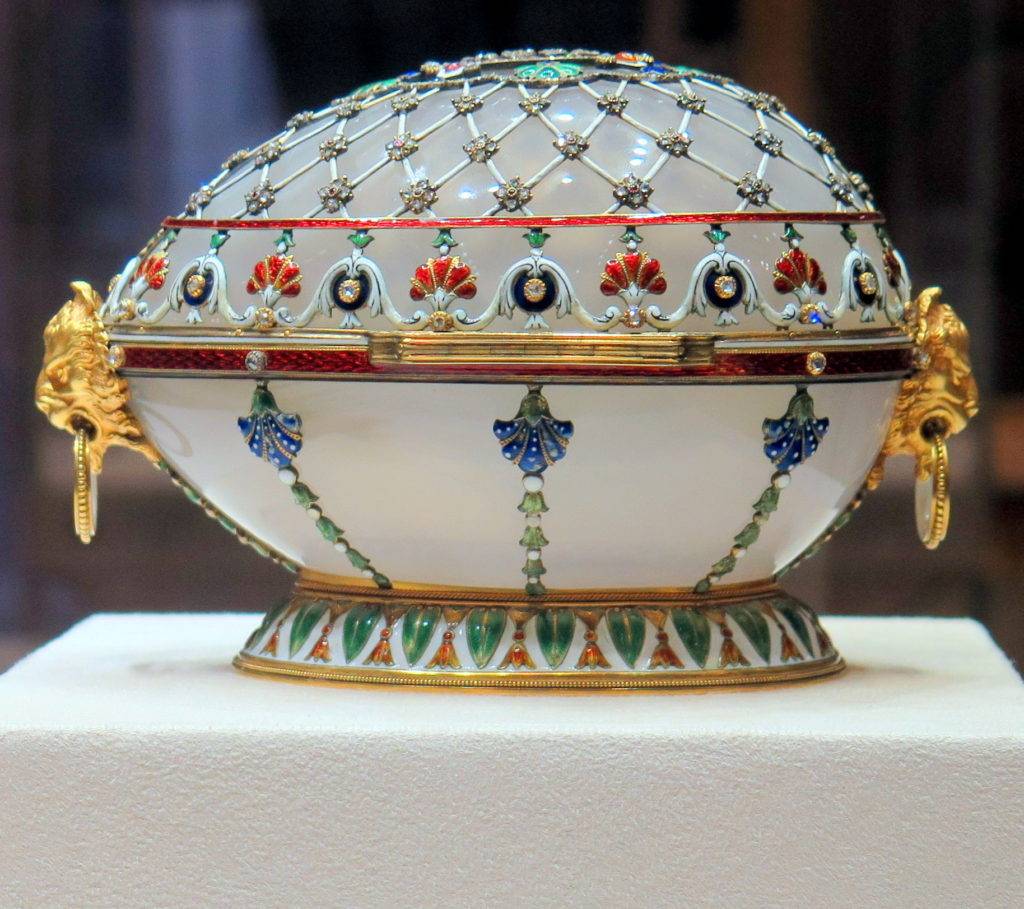
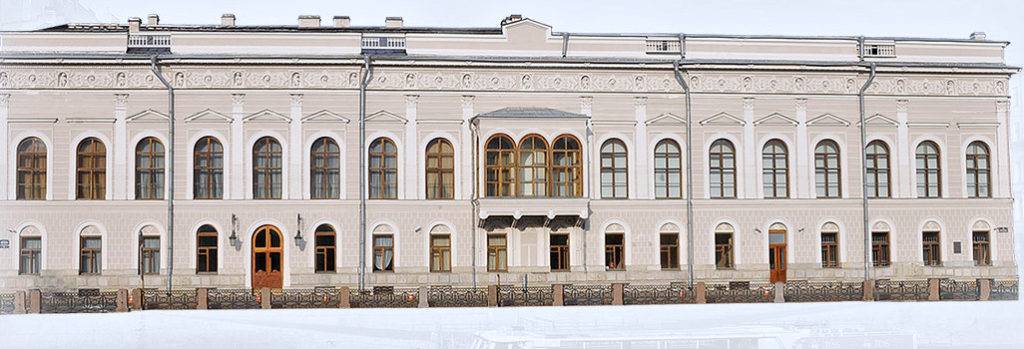
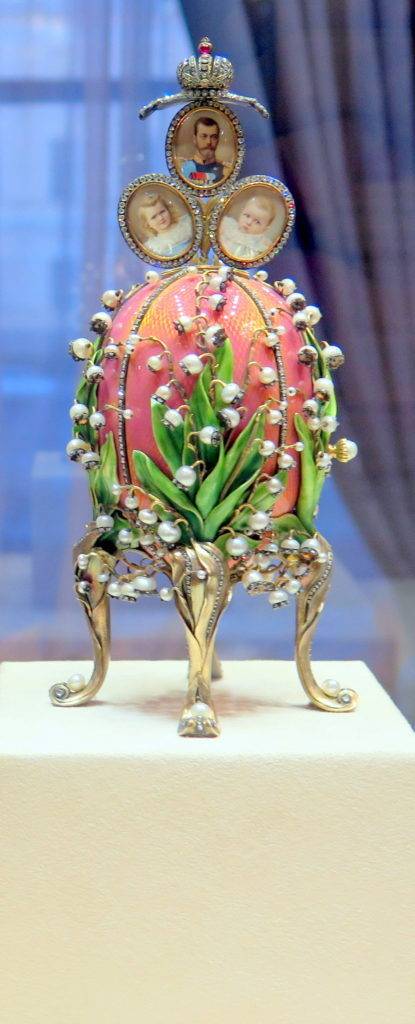
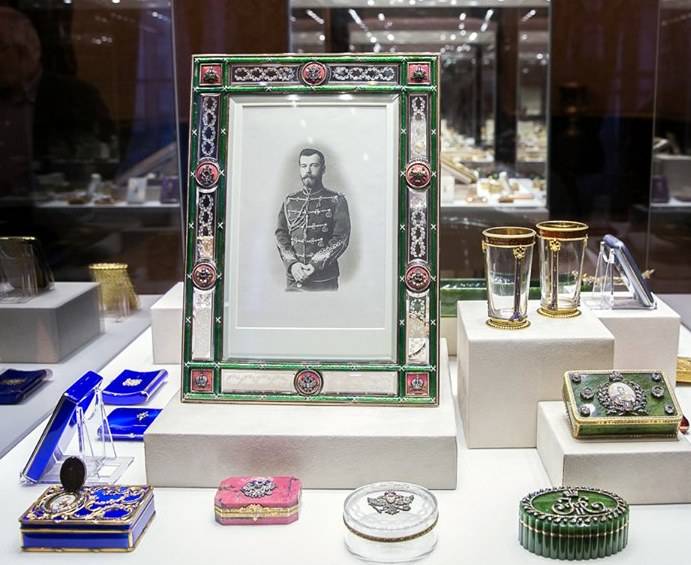
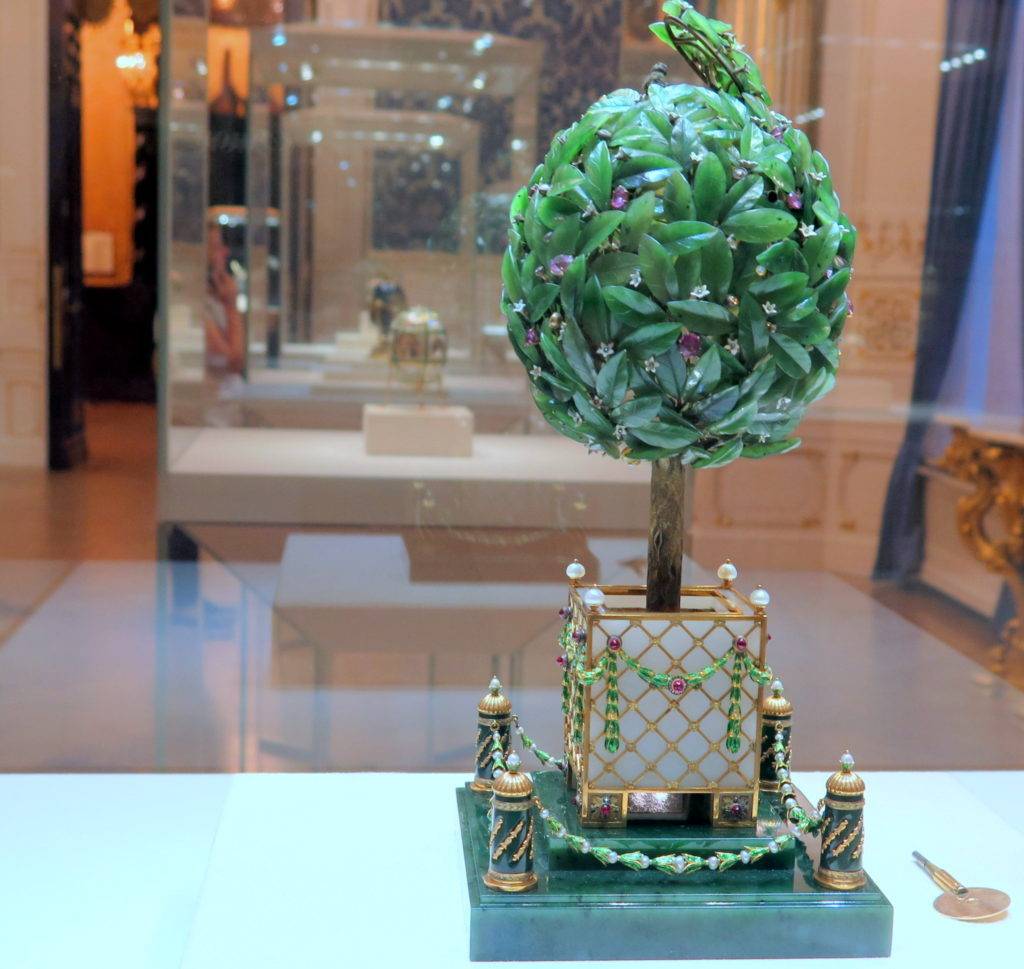
There is also a marvelous, almost airy, airy egg, with a bird called “Laurel Tree”, which consists of over 300 thin jade-carved leaves, a gold leg, a tub of porcelain, diamond and gemstone.
All the exhibits of the Faberge Museum are unique, and the most famous part of the museum’s collection consists of nine Easter eggs made to order by Russian emperors. Faberge’s eggs are real masterpieces of applied art. The attention of visitors is also attracted by the beauty of the museum building, located in the Chouvalove castle, built in the style of eclecticism in the first half of the 19th century.
The Wexelberg collection is estimated at $ 100 million. The jewels themselves are jewels. There are as many as 4,000 exhibits in the museum exhibit at Fontanka, nine of which are the most valuable exhibits of Imperial eggs displayed in the Blue Salon facing the Fontanka windows.
Faberge’s famous and charismatic eggs received the largest and most representative hall of the Chouvalove Castle.
The Faberze Museum is a dazzling 100-percent tourist attraction, featuring the fabulous Faberge Eggs, which served to showcase the richness and luxury without overdoing it, managing to remain subtle and very delicate.
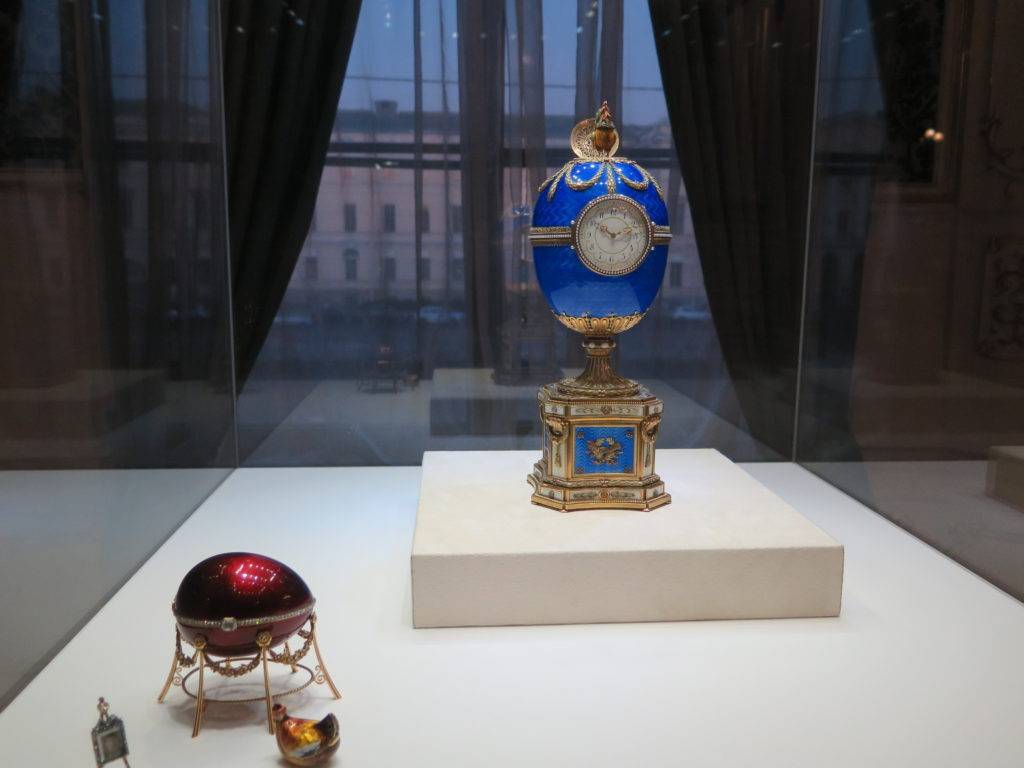
St. Petersburg – a city of great (Russian) soul, dreams and music
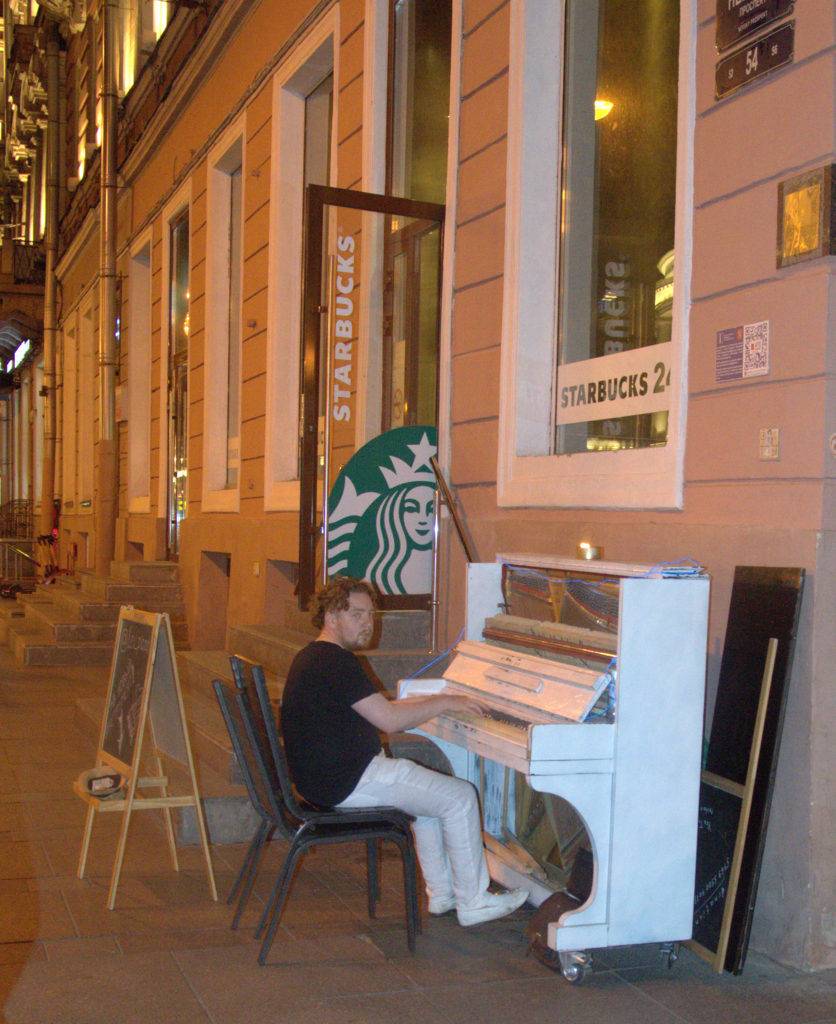
St. Petersburg is a city of numerous canals, bridges, theaters, museums, large boulevards and even larger skies that make the city a magical place. It’s hard to write what kind of pearl it is. That’s why it is on the list of the most beautiful cities in the world. It is a city of wonderful combinations of Russian heritage with a European appearance, which have enriched each other. I am fascinated by this – in a word, I hope that the lens of my camera has managed to capture part of my experience in right and authentic way.
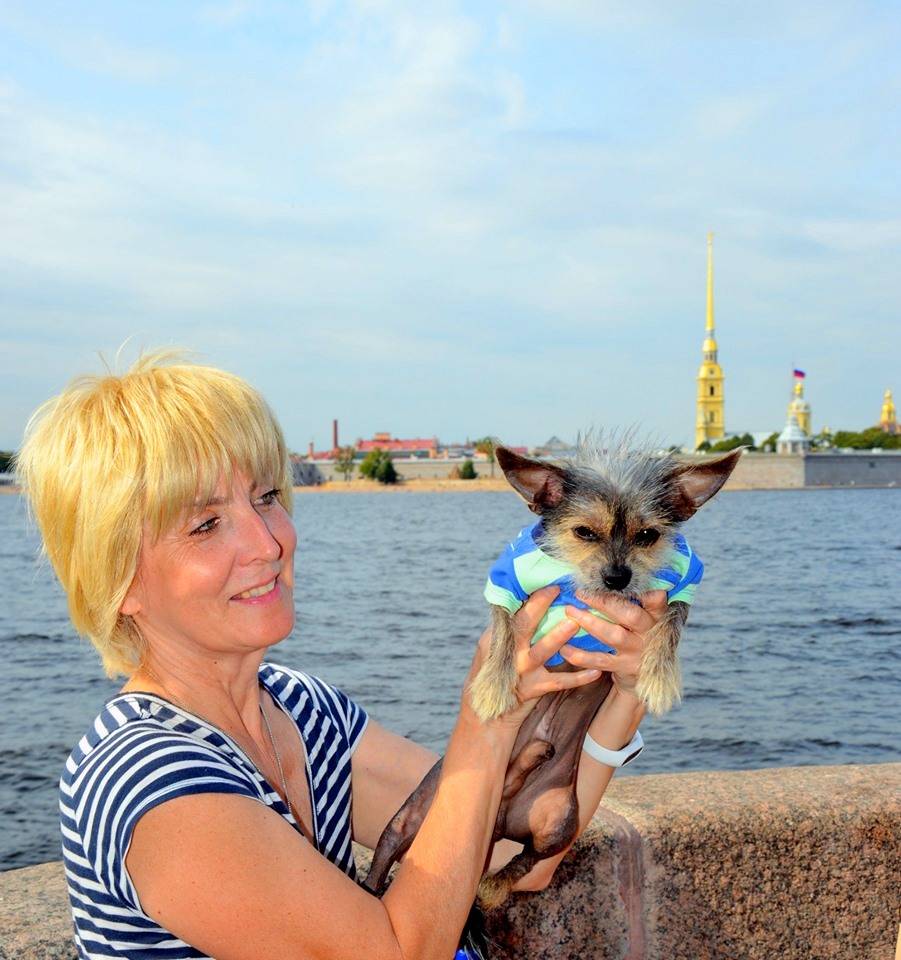
St. Petersburg is certainly one of the cities that has left a special mark in my heart and one of the journeys that I will forever remember by storing it in a casket of memories that I will happily open from time to time to remember the wonderful memoriestill next meeting of Peter and me.
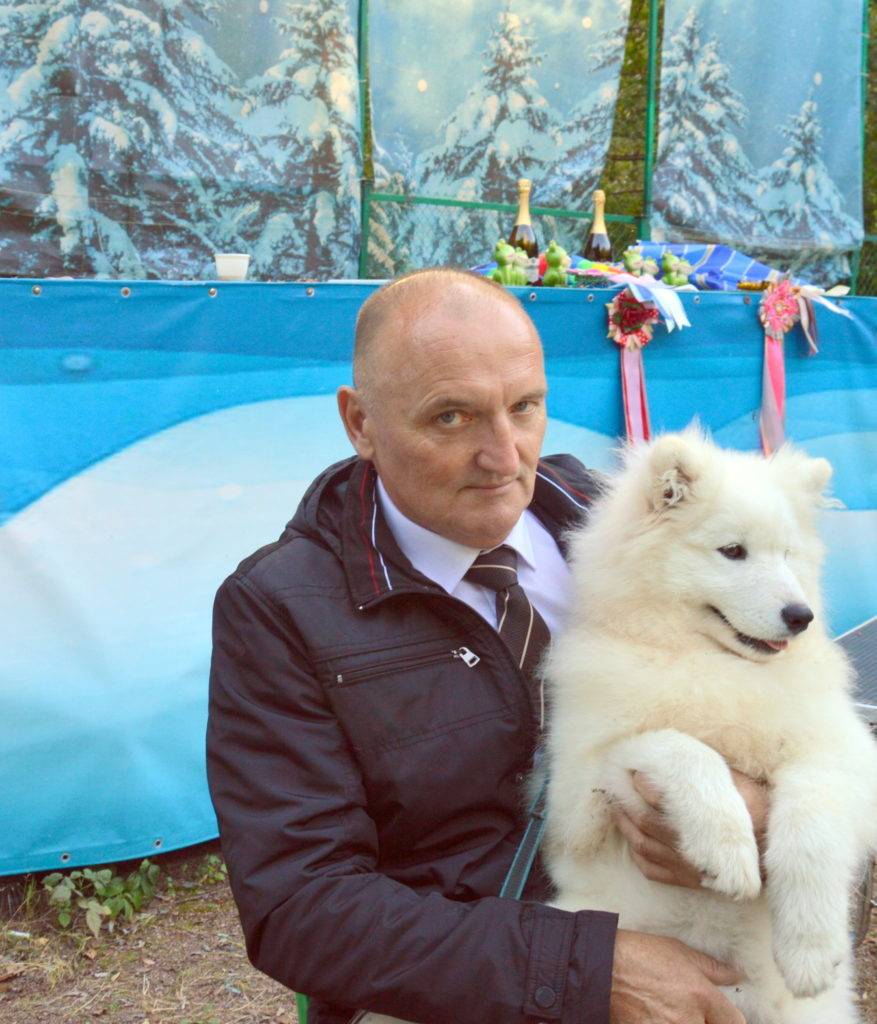
Neva Dubdog White
Our samoyed, which owes its name to the river on its mouth and the banks of this beautiful city, and now its inhabitant.
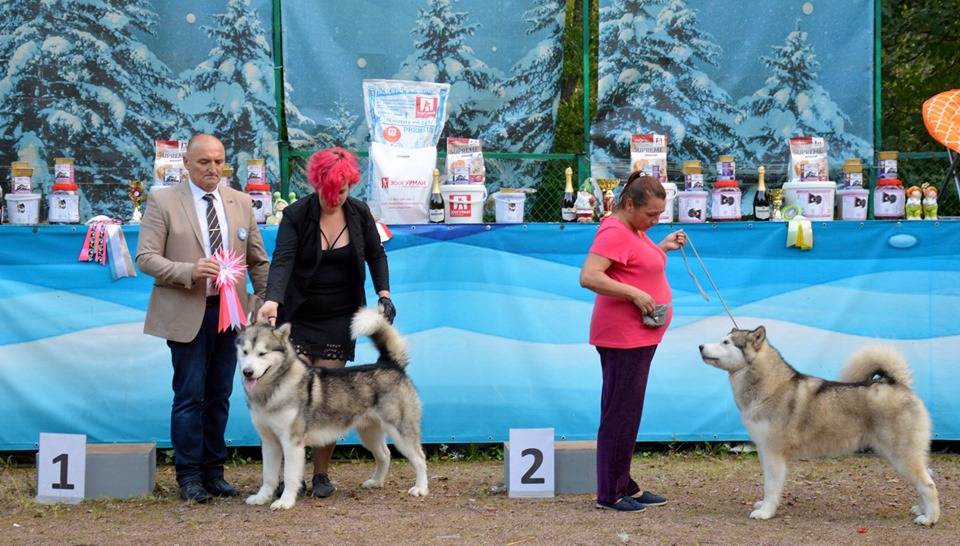
As a Kennel Judge, I participated in the St. Petersburg on Specialized dog show, which is a basic reason of my journey. I sincerely thank all my dear friends who made it possible for me to visit this beautiful city. Dogs and cynology gave me a lot of that beauty. Thanks to “Smile of the Samoyed” I traveled a good part of the globe.
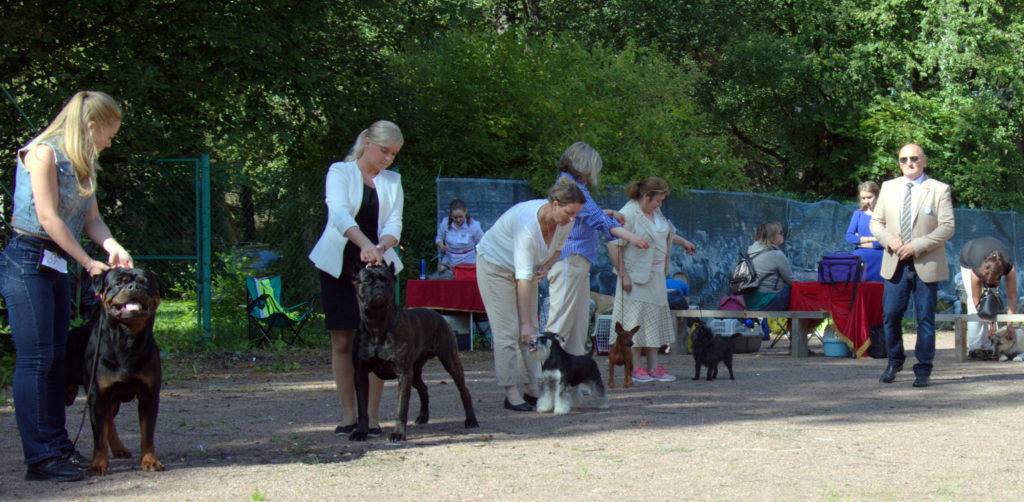
“AUTUMN IN OLGINO” (ОСЕНЬ В ОЛЬГИНО): National Dog Show for All Breeds
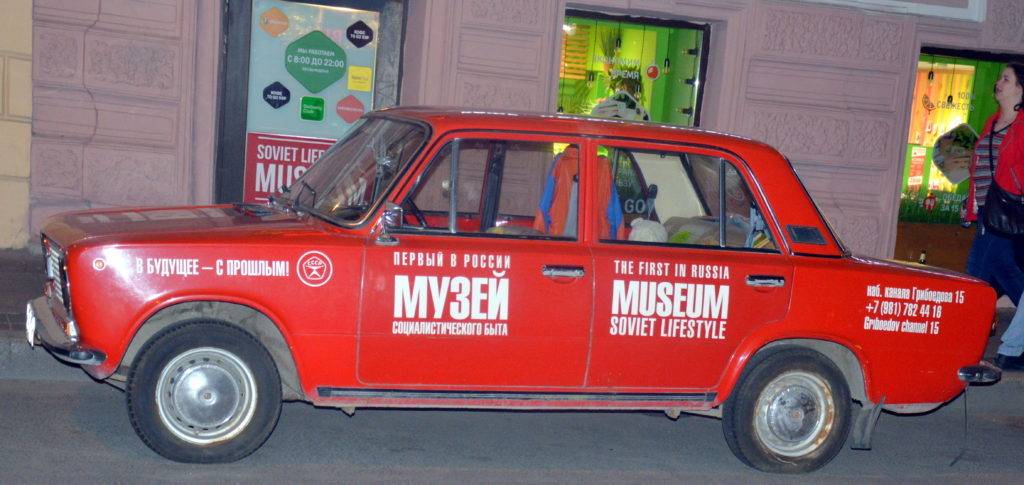
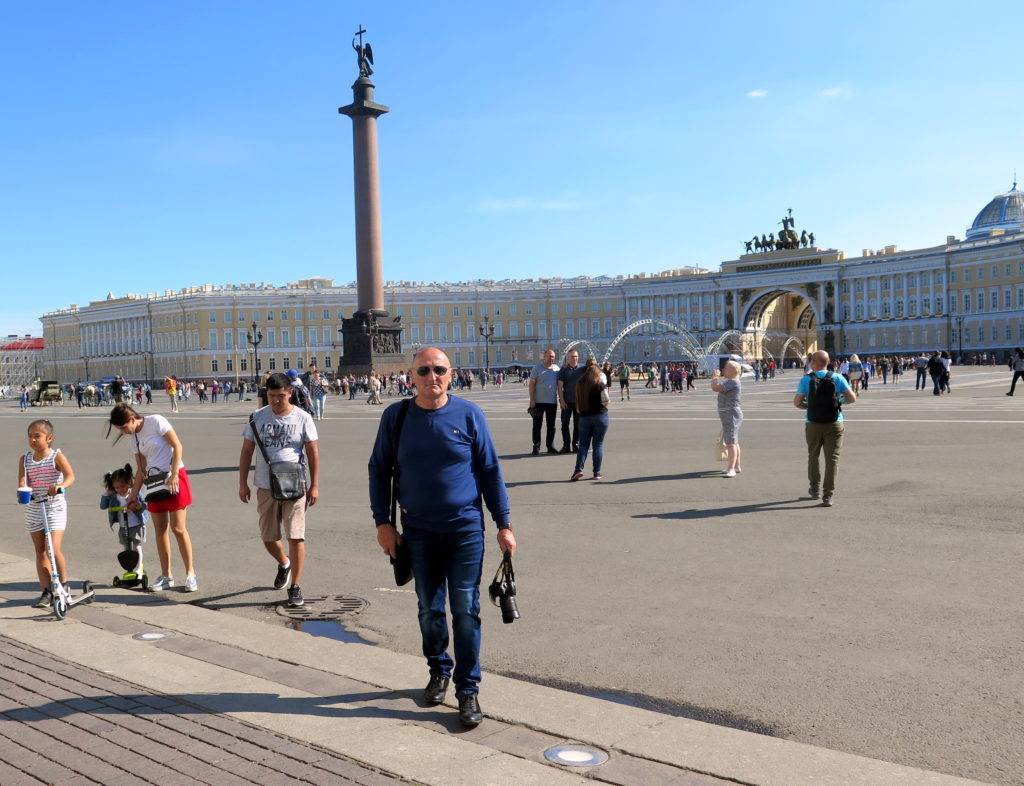
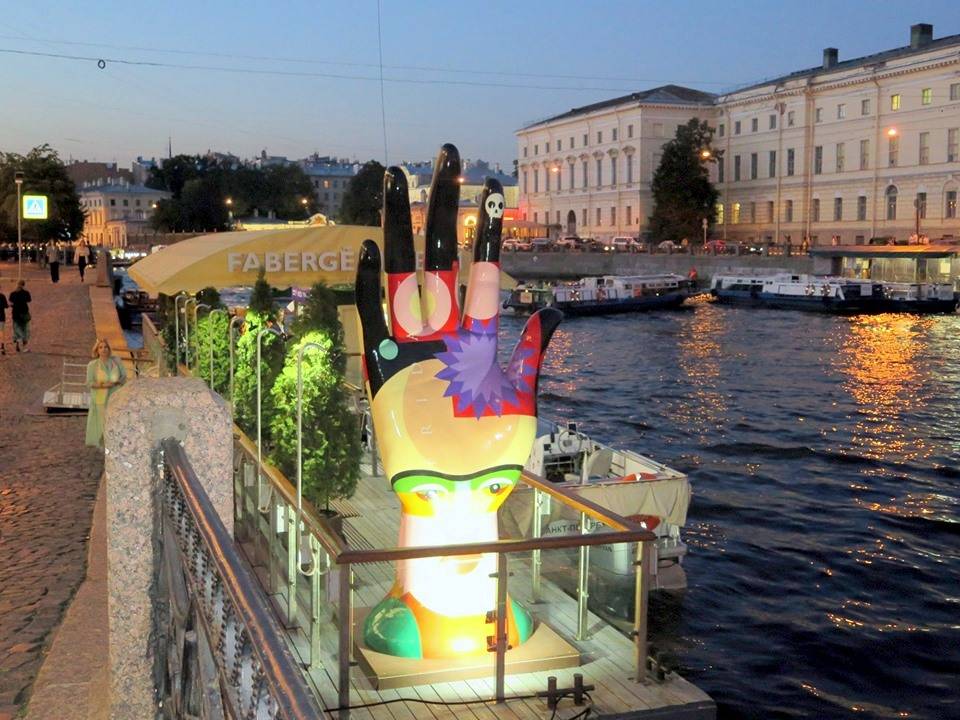
The Peter and Paul Fortress and the Rabbit Island is also a story for itself. The first thing you notice is the bell tower of the Peter and Paul Church, where the relics of Peter the Great rest today. With its gilded top and the figure of the guardian angel, with its over 120 meters, it is the tallest building in Russia of that time.
I didn’t have time to go to the Peter and Paul Fortress, just from a distance we were looking at each other, from all angles. There was so much more I wanted to go through and visit in and around the city, and where I went once, I wanted to go once more.
Well, the six museums wich I didnt visit at the Peter and Paul Fortress are just a small part of the hundreds of reasons to see you again … And then, finally, when I summarize my wishes and impressions, I have one left – to come to St. Petersburg again.
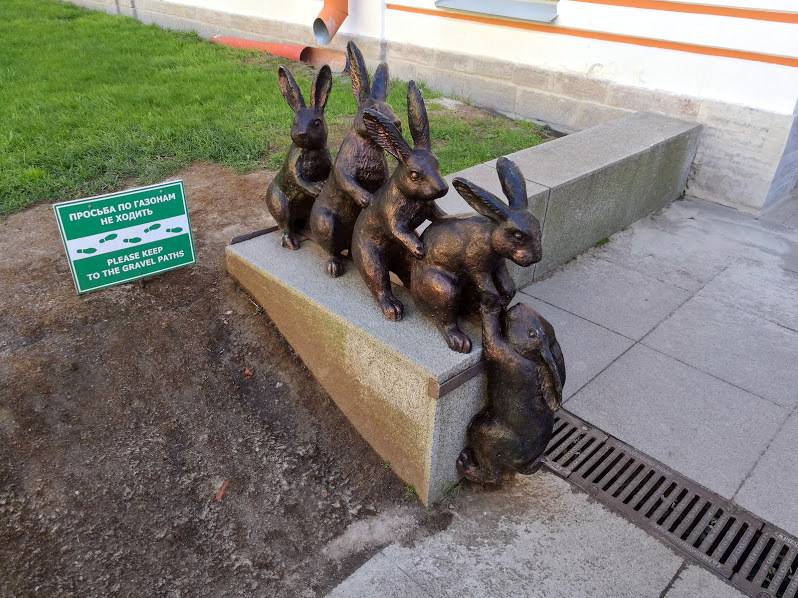
They are just one of many reasons to see you again …
THE DOG REPUBLIC (25.10.2019.)
Люблю тебя, Петра творенье…

